:max_bytes(150000):strip_icc():format(webp)/Sonyplaystation5-dc53869451d7416cbb32881a35c3fc32.jpg)
Organize Your Videos with Ease Top 8 Mac Metadata Editors for 2024

Organize Your Videos with Ease: Top 8 Mac Metadata Editors
8 Best Video Metadata Editor on Mac (Real and Easy)

Liza Brown
Mar 27, 2024• Proven solutions
Metadata is the pieces of information that help viewers understand what a video is about without having to watch it from start to finish. Things like titles, keywords, tags, timestamps, and descriptions are some metadata that should be added to a video before it is published online.
Adding the right metadata to your video is useful for many reasons. It makes it easy for search engines to correctly identify and index your video. This in turn helps viewers find your video when they search Google, iTunes, or video sharing platforms like YouTube and Vimeo.
For more experienced videographers, metadata is useful at every stage of the process of making a video, from production to post-production and publishing. Without the right metadata, professional video production and editing would be a very uphill task.
The best multimedia editors have metadata editing features. It’s also good to have a lightweight, standalone application to edit and customize video metadata quickly. In this post, we share the 8 best video metadata editors for macOS users.
8 Best Video Metadata Editors for Mac
1. Filmora
Filmora is a powerful, easy-to-use multimedia editor released in early 2019. It’s a new and improved version of the classic Filmora video editor, with many features on par with elite video editing software like Adobe Premiere Pro. It can be purchased for roughly $60 though a trial version is available for free.
FEATURES: This software makes video editing easy with lots of extras like built-in audio tracks, sound effects, title presets, transition effects, and more. FilmoraPro lets users add metadata during the export process. Simply click the export button, which is now at the top of the media window. In the pop-up screen, click on the YouTube, Vimeo, or DVD tab, depending on how you want to publish your video, and edit the title, description, tags, category and privacy settings accordingly.
2. iFlicks
iFlicks is a media conversion and video metadata editor for macOS. In addition to being able to perform a variety of video format conversions, iFlicks supports detailed metadata editing and interacts seamlessly with iTunes. This app is available for a one-time fee or on a subscription basis.
FEATURES: The iFlicks metadata editor is superbly detailed with options for adding season and episode information for TV shows. Also available are fields for tagline, release date, genre, content rating, resolution, artwork, cast, and crew, etc. Some of these metadata will even be fetched automatically based on information available via iTunes.

3. VLC
VLC Media Player is the largest open-source media player in the world. Though primarily meant for playing media files, it has powerful features for video conversion, screen capture, downloading online videos, recording screening videos, and editing video metadata.
FEATURES: VLC’s metadata editor can be found under MEDIA INFORMATION within the TOOLS menu in the top bar. Here, you can add information about the title, artist, album, publisher, and copyright of the video. VLC also lets users add custom metadata in a separate tab.

4. Subler
Subler is a free application for editing media metadata in macOS. It’s very barebones and efficient.
FEATURES: Subler actually loads the media file to be edited as separate audio and video files, allowing users to edit information about them individually. To edit metadata for the multimedia file, make sure neither the video nor the audio file is selected and click the metadata tab. Then, click the “+” button in the lower-left corner to see the long list of metadata you can add to the video.

5. Nightbirdsevolve Meta
Meta is a macOS software described as an advanced music tag editor. It supports many file formats, including MP4, and is therefore ideal for editing video metadata. Available for just $20, it has many powerful features for organizing and tagging media files.
FEATURES: Meta has a nice user interface that can be customized to taste. It also has a batch editing feature for updating metadata for multiple files simultaneously as well as a tool for editing media artworks. This application is a great option for media pros who often have to juggle and keep track of many media files at once.

6. Griff MetaZ
MetaZ is an open-source MP4 metadata editor for macOS. It’s the successor app to MetaX and has all the features you need to prepare videos to be added to iTunes.
FEATURES: Once a video file is imported into MetaZ, a number of tabs become active allowing for valuable metadata to be added. Under the video tab, you can set the video type and add information about the actors, directors, producers, and screenwriters. MetaZ also lets users search for information from any websites of their choice and will pair relevant metadata with the media files.

7. Amvidia
Amvidia is a suite of free audio apps developed for macOS. It includes a Tag Editor that’s great for organizing files and doing batch metadata edits.
FEATURES: Amvidia’s Tag Editor can source for relevant metadata from online sources and handle media files in multiple formats, including MP4. Useful metadata tags built into this app include user-friendly ones like lyrics, album, and year, as well as technical tags like Codec, bitrate, and tempo.

8. DRmare
DRmare is a paid DRM removal tool for macOS. It converts M4V videos into alternative video formats like MP4 without losing video quality, allowing users to play them without restrictions.
FEATURES: In addition to converting M4V files into multiple formats, DRmare also lets users convert them for use on multiple devices. As part of the process, this app retrieves iTunes metadata and will let users edit them after the conversion has been completed.

Conclusion
Metadata affects how we find information about videos online and how we organize our ever-growing media libraries. With these macOS video metadata editing applications, you can add detailed metadata to your videos and enable yourself to access, share, and store them painlessly.

Liza Brown
Liza Brown is a writer and a lover of all things video.
Follow @Liza Brown
Liza Brown
Mar 27, 2024• Proven solutions
Metadata is the pieces of information that help viewers understand what a video is about without having to watch it from start to finish. Things like titles, keywords, tags, timestamps, and descriptions are some metadata that should be added to a video before it is published online.
Adding the right metadata to your video is useful for many reasons. It makes it easy for search engines to correctly identify and index your video. This in turn helps viewers find your video when they search Google, iTunes, or video sharing platforms like YouTube and Vimeo.
For more experienced videographers, metadata is useful at every stage of the process of making a video, from production to post-production and publishing. Without the right metadata, professional video production and editing would be a very uphill task.
The best multimedia editors have metadata editing features. It’s also good to have a lightweight, standalone application to edit and customize video metadata quickly. In this post, we share the 8 best video metadata editors for macOS users.
8 Best Video Metadata Editors for Mac
1. Filmora
Filmora is a powerful, easy-to-use multimedia editor released in early 2019. It’s a new and improved version of the classic Filmora video editor, with many features on par with elite video editing software like Adobe Premiere Pro. It can be purchased for roughly $60 though a trial version is available for free.
FEATURES: This software makes video editing easy with lots of extras like built-in audio tracks, sound effects, title presets, transition effects, and more. FilmoraPro lets users add metadata during the export process. Simply click the export button, which is now at the top of the media window. In the pop-up screen, click on the YouTube, Vimeo, or DVD tab, depending on how you want to publish your video, and edit the title, description, tags, category and privacy settings accordingly.
2. iFlicks
iFlicks is a media conversion and video metadata editor for macOS. In addition to being able to perform a variety of video format conversions, iFlicks supports detailed metadata editing and interacts seamlessly with iTunes. This app is available for a one-time fee or on a subscription basis.
FEATURES: The iFlicks metadata editor is superbly detailed with options for adding season and episode information for TV shows. Also available are fields for tagline, release date, genre, content rating, resolution, artwork, cast, and crew, etc. Some of these metadata will even be fetched automatically based on information available via iTunes.

3. VLC
VLC Media Player is the largest open-source media player in the world. Though primarily meant for playing media files, it has powerful features for video conversion, screen capture, downloading online videos, recording screening videos, and editing video metadata.
FEATURES: VLC’s metadata editor can be found under MEDIA INFORMATION within the TOOLS menu in the top bar. Here, you can add information about the title, artist, album, publisher, and copyright of the video. VLC also lets users add custom metadata in a separate tab.

4. Subler
Subler is a free application for editing media metadata in macOS. It’s very barebones and efficient.
FEATURES: Subler actually loads the media file to be edited as separate audio and video files, allowing users to edit information about them individually. To edit metadata for the multimedia file, make sure neither the video nor the audio file is selected and click the metadata tab. Then, click the “+” button in the lower-left corner to see the long list of metadata you can add to the video.

5. Nightbirdsevolve Meta
Meta is a macOS software described as an advanced music tag editor. It supports many file formats, including MP4, and is therefore ideal for editing video metadata. Available for just $20, it has many powerful features for organizing and tagging media files.
FEATURES: Meta has a nice user interface that can be customized to taste. It also has a batch editing feature for updating metadata for multiple files simultaneously as well as a tool for editing media artworks. This application is a great option for media pros who often have to juggle and keep track of many media files at once.

6. Griff MetaZ
MetaZ is an open-source MP4 metadata editor for macOS. It’s the successor app to MetaX and has all the features you need to prepare videos to be added to iTunes.
FEATURES: Once a video file is imported into MetaZ, a number of tabs become active allowing for valuable metadata to be added. Under the video tab, you can set the video type and add information about the actors, directors, producers, and screenwriters. MetaZ also lets users search for information from any websites of their choice and will pair relevant metadata with the media files.

7. Amvidia
Amvidia is a suite of free audio apps developed for macOS. It includes a Tag Editor that’s great for organizing files and doing batch metadata edits.
FEATURES: Amvidia’s Tag Editor can source for relevant metadata from online sources and handle media files in multiple formats, including MP4. Useful metadata tags built into this app include user-friendly ones like lyrics, album, and year, as well as technical tags like Codec, bitrate, and tempo.

8. DRmare
DRmare is a paid DRM removal tool for macOS. It converts M4V videos into alternative video formats like MP4 without losing video quality, allowing users to play them without restrictions.
FEATURES: In addition to converting M4V files into multiple formats, DRmare also lets users convert them for use on multiple devices. As part of the process, this app retrieves iTunes metadata and will let users edit them after the conversion has been completed.

Conclusion
Metadata affects how we find information about videos online and how we organize our ever-growing media libraries. With these macOS video metadata editing applications, you can add detailed metadata to your videos and enable yourself to access, share, and store them painlessly.

Liza Brown
Liza Brown is a writer and a lover of all things video.
Follow @Liza Brown
Liza Brown
Mar 27, 2024• Proven solutions
Metadata is the pieces of information that help viewers understand what a video is about without having to watch it from start to finish. Things like titles, keywords, tags, timestamps, and descriptions are some metadata that should be added to a video before it is published online.
Adding the right metadata to your video is useful for many reasons. It makes it easy for search engines to correctly identify and index your video. This in turn helps viewers find your video when they search Google, iTunes, or video sharing platforms like YouTube and Vimeo.
For more experienced videographers, metadata is useful at every stage of the process of making a video, from production to post-production and publishing. Without the right metadata, professional video production and editing would be a very uphill task.
The best multimedia editors have metadata editing features. It’s also good to have a lightweight, standalone application to edit and customize video metadata quickly. In this post, we share the 8 best video metadata editors for macOS users.
8 Best Video Metadata Editors for Mac
1. Filmora
Filmora is a powerful, easy-to-use multimedia editor released in early 2019. It’s a new and improved version of the classic Filmora video editor, with many features on par with elite video editing software like Adobe Premiere Pro. It can be purchased for roughly $60 though a trial version is available for free.
FEATURES: This software makes video editing easy with lots of extras like built-in audio tracks, sound effects, title presets, transition effects, and more. FilmoraPro lets users add metadata during the export process. Simply click the export button, which is now at the top of the media window. In the pop-up screen, click on the YouTube, Vimeo, or DVD tab, depending on how you want to publish your video, and edit the title, description, tags, category and privacy settings accordingly.
2. iFlicks
iFlicks is a media conversion and video metadata editor for macOS. In addition to being able to perform a variety of video format conversions, iFlicks supports detailed metadata editing and interacts seamlessly with iTunes. This app is available for a one-time fee or on a subscription basis.
FEATURES: The iFlicks metadata editor is superbly detailed with options for adding season and episode information for TV shows. Also available are fields for tagline, release date, genre, content rating, resolution, artwork, cast, and crew, etc. Some of these metadata will even be fetched automatically based on information available via iTunes.

3. VLC
VLC Media Player is the largest open-source media player in the world. Though primarily meant for playing media files, it has powerful features for video conversion, screen capture, downloading online videos, recording screening videos, and editing video metadata.
FEATURES: VLC’s metadata editor can be found under MEDIA INFORMATION within the TOOLS menu in the top bar. Here, you can add information about the title, artist, album, publisher, and copyright of the video. VLC also lets users add custom metadata in a separate tab.

4. Subler
Subler is a free application for editing media metadata in macOS. It’s very barebones and efficient.
FEATURES: Subler actually loads the media file to be edited as separate audio and video files, allowing users to edit information about them individually. To edit metadata for the multimedia file, make sure neither the video nor the audio file is selected and click the metadata tab. Then, click the “+” button in the lower-left corner to see the long list of metadata you can add to the video.

5. Nightbirdsevolve Meta
Meta is a macOS software described as an advanced music tag editor. It supports many file formats, including MP4, and is therefore ideal for editing video metadata. Available for just $20, it has many powerful features for organizing and tagging media files.
FEATURES: Meta has a nice user interface that can be customized to taste. It also has a batch editing feature for updating metadata for multiple files simultaneously as well as a tool for editing media artworks. This application is a great option for media pros who often have to juggle and keep track of many media files at once.

6. Griff MetaZ
MetaZ is an open-source MP4 metadata editor for macOS. It’s the successor app to MetaX and has all the features you need to prepare videos to be added to iTunes.
FEATURES: Once a video file is imported into MetaZ, a number of tabs become active allowing for valuable metadata to be added. Under the video tab, you can set the video type and add information about the actors, directors, producers, and screenwriters. MetaZ also lets users search for information from any websites of their choice and will pair relevant metadata with the media files.

7. Amvidia
Amvidia is a suite of free audio apps developed for macOS. It includes a Tag Editor that’s great for organizing files and doing batch metadata edits.
FEATURES: Amvidia’s Tag Editor can source for relevant metadata from online sources and handle media files in multiple formats, including MP4. Useful metadata tags built into this app include user-friendly ones like lyrics, album, and year, as well as technical tags like Codec, bitrate, and tempo.

8. DRmare
DRmare is a paid DRM removal tool for macOS. It converts M4V videos into alternative video formats like MP4 without losing video quality, allowing users to play them without restrictions.
FEATURES: In addition to converting M4V files into multiple formats, DRmare also lets users convert them for use on multiple devices. As part of the process, this app retrieves iTunes metadata and will let users edit them after the conversion has been completed.

Conclusion
Metadata affects how we find information about videos online and how we organize our ever-growing media libraries. With these macOS video metadata editing applications, you can add detailed metadata to your videos and enable yourself to access, share, and store them painlessly.

Liza Brown
Liza Brown is a writer and a lover of all things video.
Follow @Liza Brown
Liza Brown
Mar 27, 2024• Proven solutions
Metadata is the pieces of information that help viewers understand what a video is about without having to watch it from start to finish. Things like titles, keywords, tags, timestamps, and descriptions are some metadata that should be added to a video before it is published online.
Adding the right metadata to your video is useful for many reasons. It makes it easy for search engines to correctly identify and index your video. This in turn helps viewers find your video when they search Google, iTunes, or video sharing platforms like YouTube and Vimeo.
For more experienced videographers, metadata is useful at every stage of the process of making a video, from production to post-production and publishing. Without the right metadata, professional video production and editing would be a very uphill task.
The best multimedia editors have metadata editing features. It’s also good to have a lightweight, standalone application to edit and customize video metadata quickly. In this post, we share the 8 best video metadata editors for macOS users.
8 Best Video Metadata Editors for Mac
1. Filmora
Filmora is a powerful, easy-to-use multimedia editor released in early 2019. It’s a new and improved version of the classic Filmora video editor, with many features on par with elite video editing software like Adobe Premiere Pro. It can be purchased for roughly $60 though a trial version is available for free.
FEATURES: This software makes video editing easy with lots of extras like built-in audio tracks, sound effects, title presets, transition effects, and more. FilmoraPro lets users add metadata during the export process. Simply click the export button, which is now at the top of the media window. In the pop-up screen, click on the YouTube, Vimeo, or DVD tab, depending on how you want to publish your video, and edit the title, description, tags, category and privacy settings accordingly.
2. iFlicks
iFlicks is a media conversion and video metadata editor for macOS. In addition to being able to perform a variety of video format conversions, iFlicks supports detailed metadata editing and interacts seamlessly with iTunes. This app is available for a one-time fee or on a subscription basis.
FEATURES: The iFlicks metadata editor is superbly detailed with options for adding season and episode information for TV shows. Also available are fields for tagline, release date, genre, content rating, resolution, artwork, cast, and crew, etc. Some of these metadata will even be fetched automatically based on information available via iTunes.

3. VLC
VLC Media Player is the largest open-source media player in the world. Though primarily meant for playing media files, it has powerful features for video conversion, screen capture, downloading online videos, recording screening videos, and editing video metadata.
FEATURES: VLC’s metadata editor can be found under MEDIA INFORMATION within the TOOLS menu in the top bar. Here, you can add information about the title, artist, album, publisher, and copyright of the video. VLC also lets users add custom metadata in a separate tab.

4. Subler
Subler is a free application for editing media metadata in macOS. It’s very barebones and efficient.
FEATURES: Subler actually loads the media file to be edited as separate audio and video files, allowing users to edit information about them individually. To edit metadata for the multimedia file, make sure neither the video nor the audio file is selected and click the metadata tab. Then, click the “+” button in the lower-left corner to see the long list of metadata you can add to the video.

5. Nightbirdsevolve Meta
Meta is a macOS software described as an advanced music tag editor. It supports many file formats, including MP4, and is therefore ideal for editing video metadata. Available for just $20, it has many powerful features for organizing and tagging media files.
FEATURES: Meta has a nice user interface that can be customized to taste. It also has a batch editing feature for updating metadata for multiple files simultaneously as well as a tool for editing media artworks. This application is a great option for media pros who often have to juggle and keep track of many media files at once.

6. Griff MetaZ
MetaZ is an open-source MP4 metadata editor for macOS. It’s the successor app to MetaX and has all the features you need to prepare videos to be added to iTunes.
FEATURES: Once a video file is imported into MetaZ, a number of tabs become active allowing for valuable metadata to be added. Under the video tab, you can set the video type and add information about the actors, directors, producers, and screenwriters. MetaZ also lets users search for information from any websites of their choice and will pair relevant metadata with the media files.

7. Amvidia
Amvidia is a suite of free audio apps developed for macOS. It includes a Tag Editor that’s great for organizing files and doing batch metadata edits.
FEATURES: Amvidia’s Tag Editor can source for relevant metadata from online sources and handle media files in multiple formats, including MP4. Useful metadata tags built into this app include user-friendly ones like lyrics, album, and year, as well as technical tags like Codec, bitrate, and tempo.

8. DRmare
DRmare is a paid DRM removal tool for macOS. It converts M4V videos into alternative video formats like MP4 without losing video quality, allowing users to play them without restrictions.
FEATURES: In addition to converting M4V files into multiple formats, DRmare also lets users convert them for use on multiple devices. As part of the process, this app retrieves iTunes metadata and will let users edit them after the conversion has been completed.

Conclusion
Metadata affects how we find information about videos online and how we organize our ever-growing media libraries. With these macOS video metadata editing applications, you can add detailed metadata to your videos and enable yourself to access, share, and store them painlessly.

Liza Brown
Liza Brown is a writer and a lover of all things video.
Follow @Liza Brown
Avidemux Essentials: How to Crop, Cut, and Enhance Your Videos
How to Crop a Video with Avidemux

Ollie Mattison
Mar 27, 2024• Proven solutions
Cropping a video, to bring focus onto the important aspects and remove the extraneous parts of the scene, is one of the most valuable tools available to a video editor. It can be used as mentioned to ensure the viewer focuses on what is important, but also to magnify objects on the screen, such as with footage of nature. It has many uses, and one of the best tools available for cropping video is the free program Avidemux. Here we are going to go through the process of getting Avidemux running on your system and cropping some video.
If Avidemux is too complicate for you, you can consider Wondershare Filmora , which is an easy-to-use video editing tool to crop videos within several click. Download the free trial version blow.
 Download Mac Version ](https://tools.techidaily.com/wondershare/filmora/download/ )
Download Mac Version ](https://tools.techidaily.com/wondershare/filmora/download/ )
How to Crop a Video with Avidemux
1. Installation
You can find Avidemux for download here , it is available for a wide range of platforms, just download the version that fits your needs. Once downloaded, install in the standard way for your platform, this is the Wndows version (64bit).
One point of note during installation is that you can choose which parts of the program you wish to install. It is a very small footprint and for the best performance it is wise to simply install everything.

Once installed you will be presented with the program as seen here.

2. Importing Video
The next step is importing video. This can be done in two ways, by clicking the file folder icon at the top left you open a standard file browser to navigate to, and select your chosen video file, or alternatively you can simply drag you video into the main panel to import it.

Whichever route you take, you will end up with your video file loaded in like this.
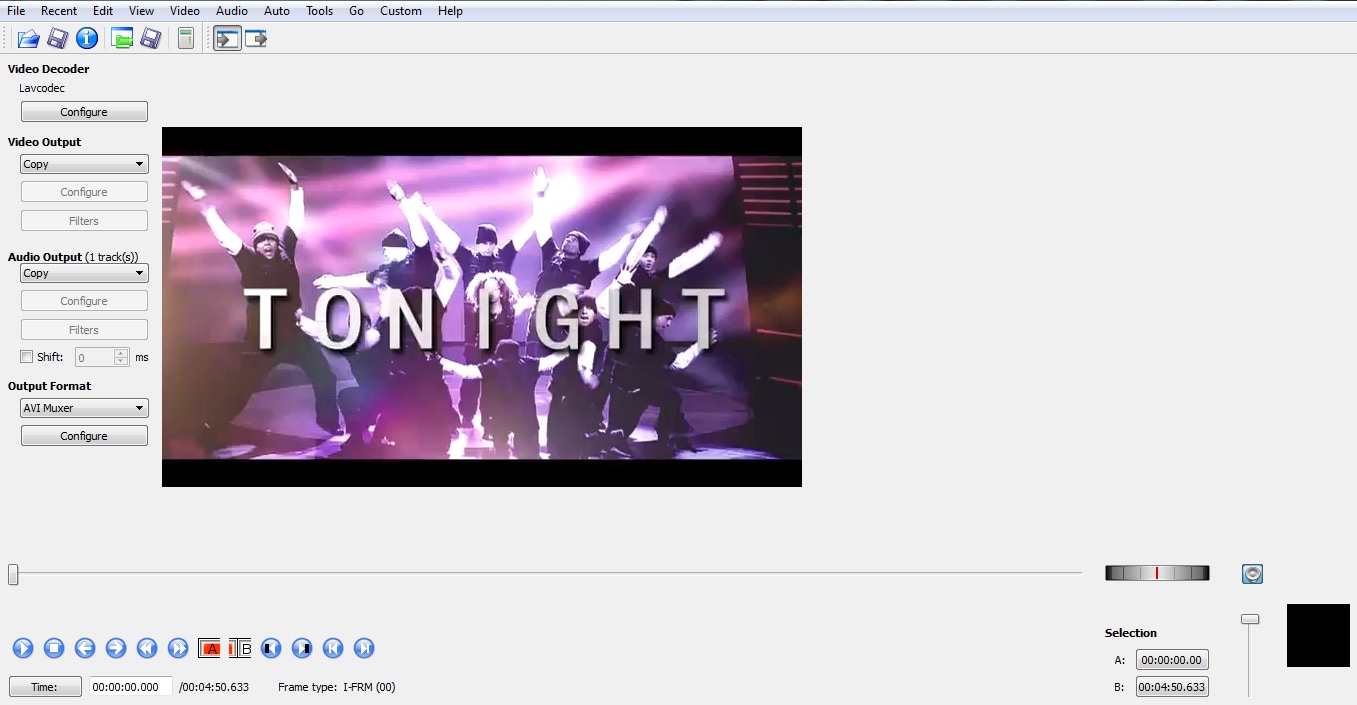
Now you can edit the video as you need, Avidemux contains a wealth of features to enable the full spectrum of editing tasks to be completed. However, here we are going to look at the cropping tool, so on to the next step.
3. Editing Video
Avidemux has some idiosyncrasies in terms of operation, one of those is that to be able to edit any video, you have to choose your output format. Don’t worry though, this is easy, just use the dropdown at the side to choose the output format you want as can be seen here.

Once that is set you are free to start editing your footage.
4. Cropping
It is important to understand how the editing process works in Avidemux, everything is accessed via the filters menu Video>Filters and from here you are faced with a new interface that enables you to choose the component you wish to use.

Selecting ‘Crop’ from the menu and pressing the green plus symbol at the bottom activated the crop tool and presents you with yet another view that allows you to adjust the crop to your tastes.
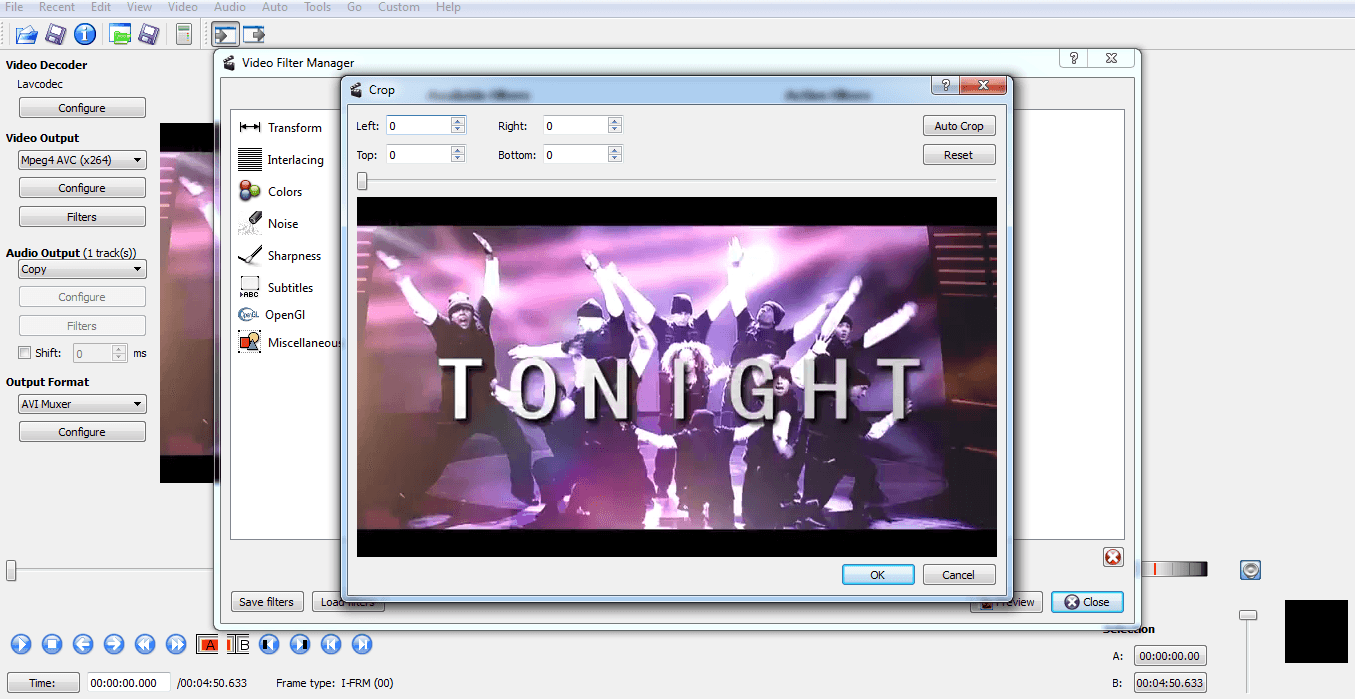
5. Cropping controls
There are two options for cropping, you can use the Auto crop feature, which will detect any black lines and crop the footage between them, or if you are using the crop tool for something else, or just want to do it manually, you can set the crop via the left right top and bottom boxes. Values input here are the number of pixels from that edge the crop extends, as you are setting it, this is displayed with a green block signifying the area of the image that will be removed.
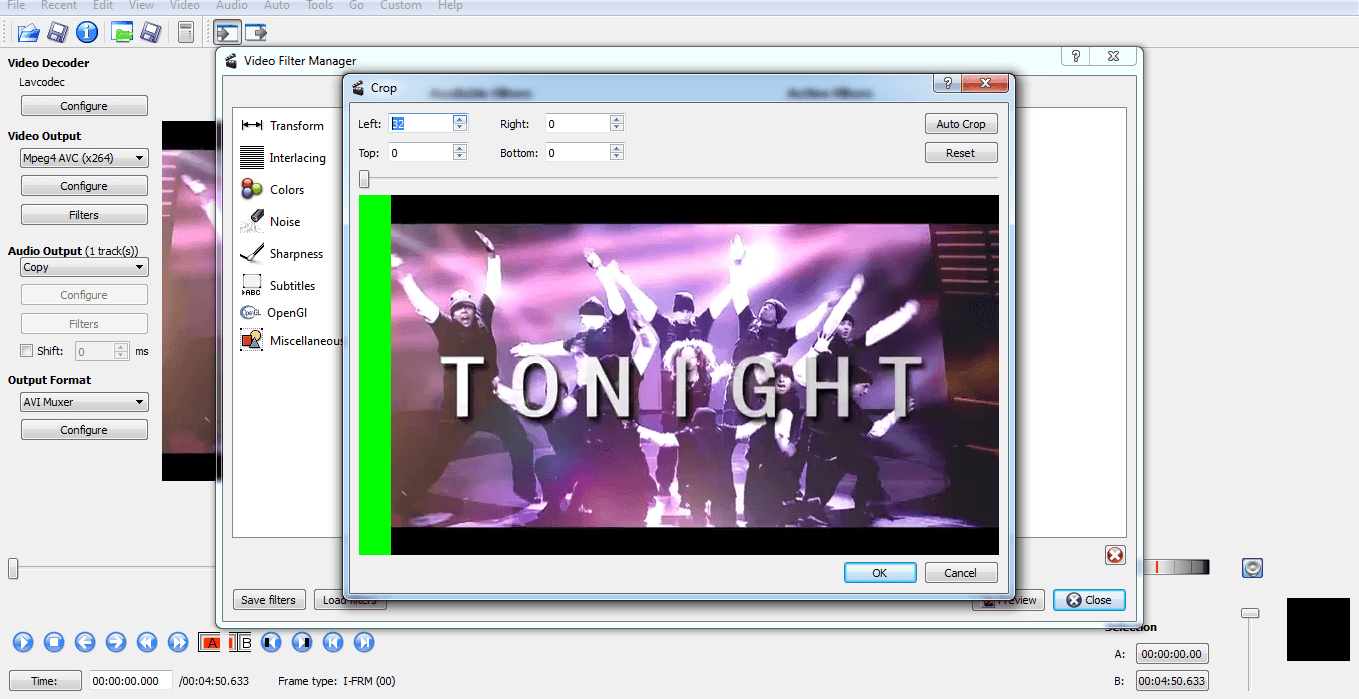
You can adjust this independently for all 4 edges as you wish.
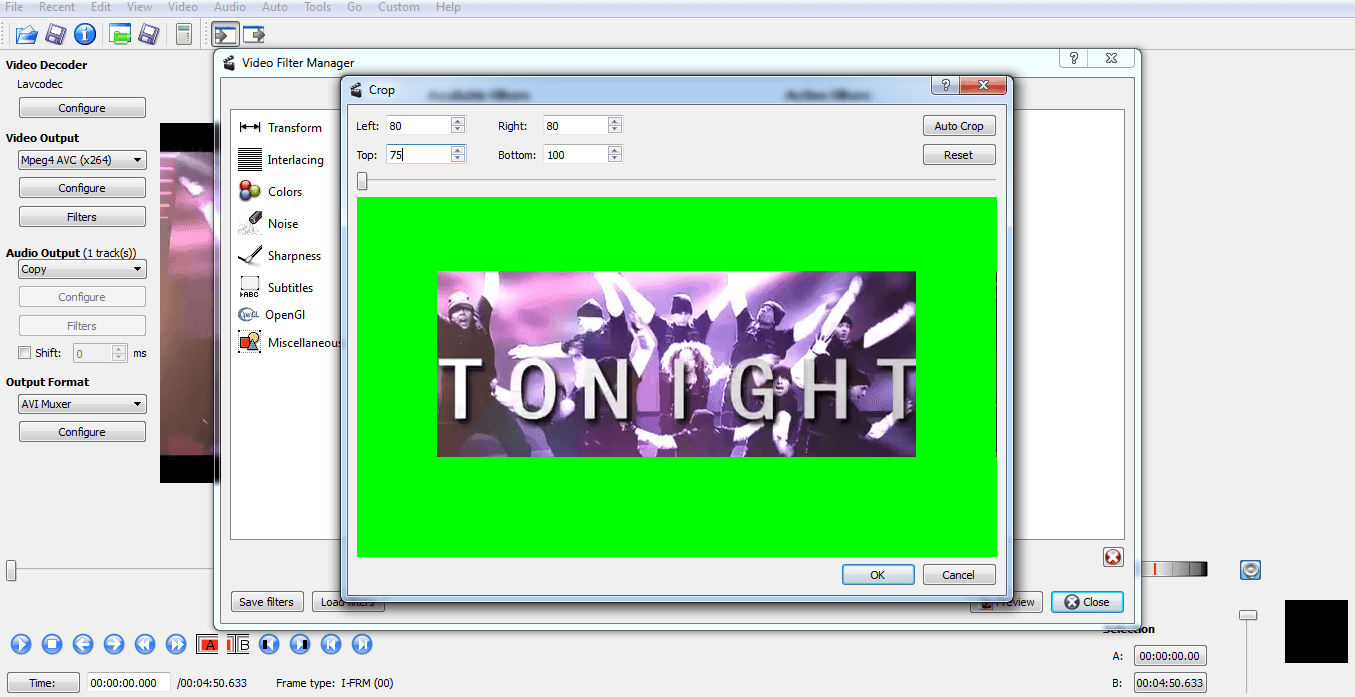
Once you are happy with the crop, you click Ok and it takes you back to the familiar filter menu where you can use other components to perform more editing if you need.
6. Saving the crop
One of the most common points of confusion with Avidemux comes at this point, as your video will look no different to when you started, and many think they have done something wrong, but this is another part of Avidemux workflow. These filters can only be applied when the video is reencoded, and you do that through the file>save menu.

Selecting this presents the familiar export dialogue and allows you to choose the name and destination of the file. Once that is done you click OK and you will see Avidemux processing your file and re-rendering it in this dialogue box.
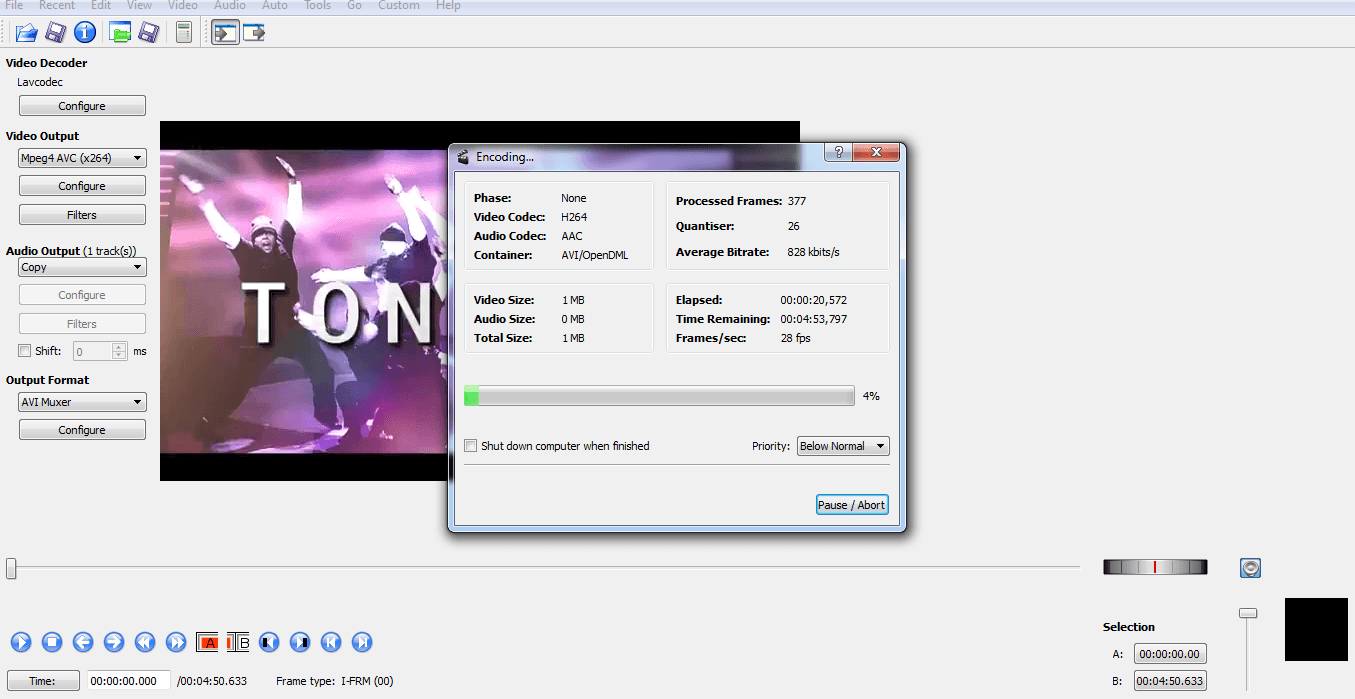
How long it takes will depend on a few factors, how many other effects have been added, how fast a processor your computer has, and how large and what resolution the video is. Format also plays a part in the process too, with some formats taking less time to encode than others. Once it has finished, you can view your video and see the crop in action.
As we can see, although there are a few aspects of the workflow that are a little unintuitive, cropping video in Avidemux is a straightforward process that anyone can accomplish with a bit of patience.
One of the key things to remember with Avidemux is that you apply all of your filters before re-encoding, this again is a question of patience and a bit of organization to ensure everything you wish to do is completed in order.
Avidemux is a great piece of software, it lacks the polish of some of its commercial rivals of course, but behind the sometimes clunky interface there is a very broad range of features that allow you to accomplish more or less any editing task you may want. In terms of free programs this is about as good as it gets, and the output is, without a doubt, great quality. For anyone looking for a free solution to video editing problems, and who do not mind a learning process Avidemux provides a useful tool.
An Easier Way to Crop a Video with Filmora
Filmora Video Editor is a powerful program that allows you to create stunning video clips in only a few clicks. This video editing software provides users with a variety of tools for editing videos. It also includes a user-friendly interface for editing home films on Windows PCs, Macs, and Linux devices. To crop a video, these are to follow:
Step 1: Open a video that you want to edit. Go to “Import” and choose the file that you want to upload and put it in the Media Library.
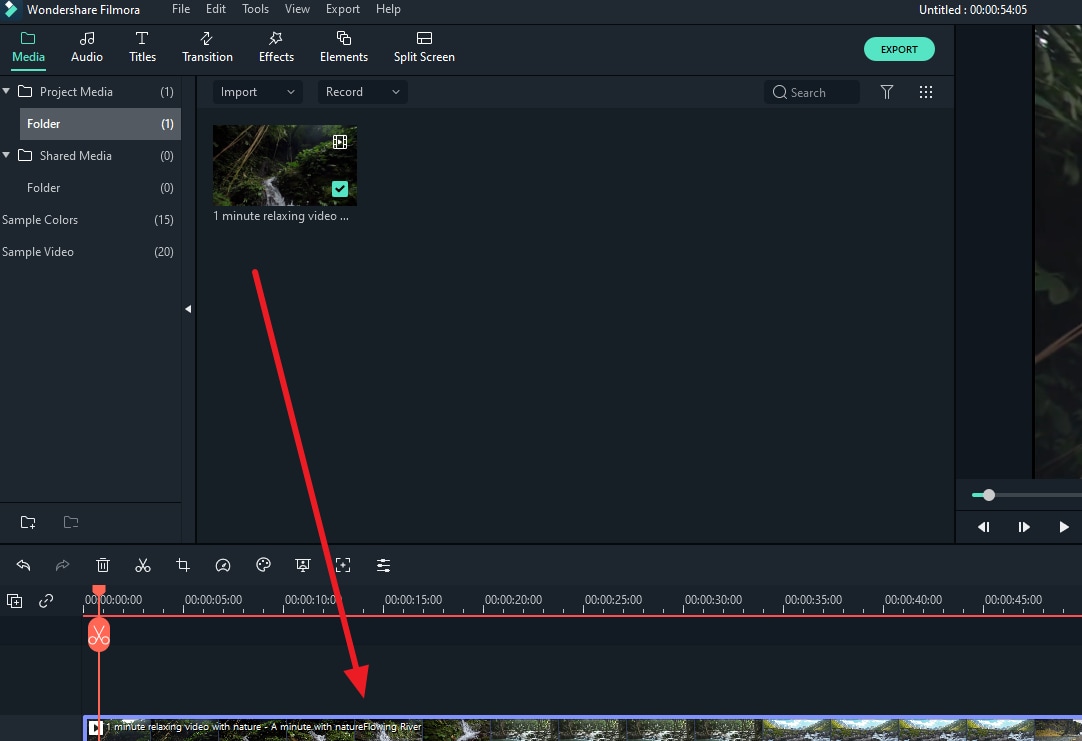
Step 2: Select the “Crop and Zoom” icon in the Filmora editing tool.
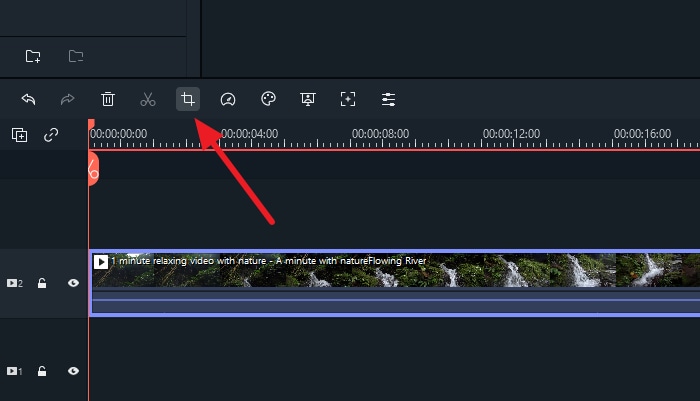
Step 3: To alter the size of the crop frame, drag the pointer from any corner of your video preview window.
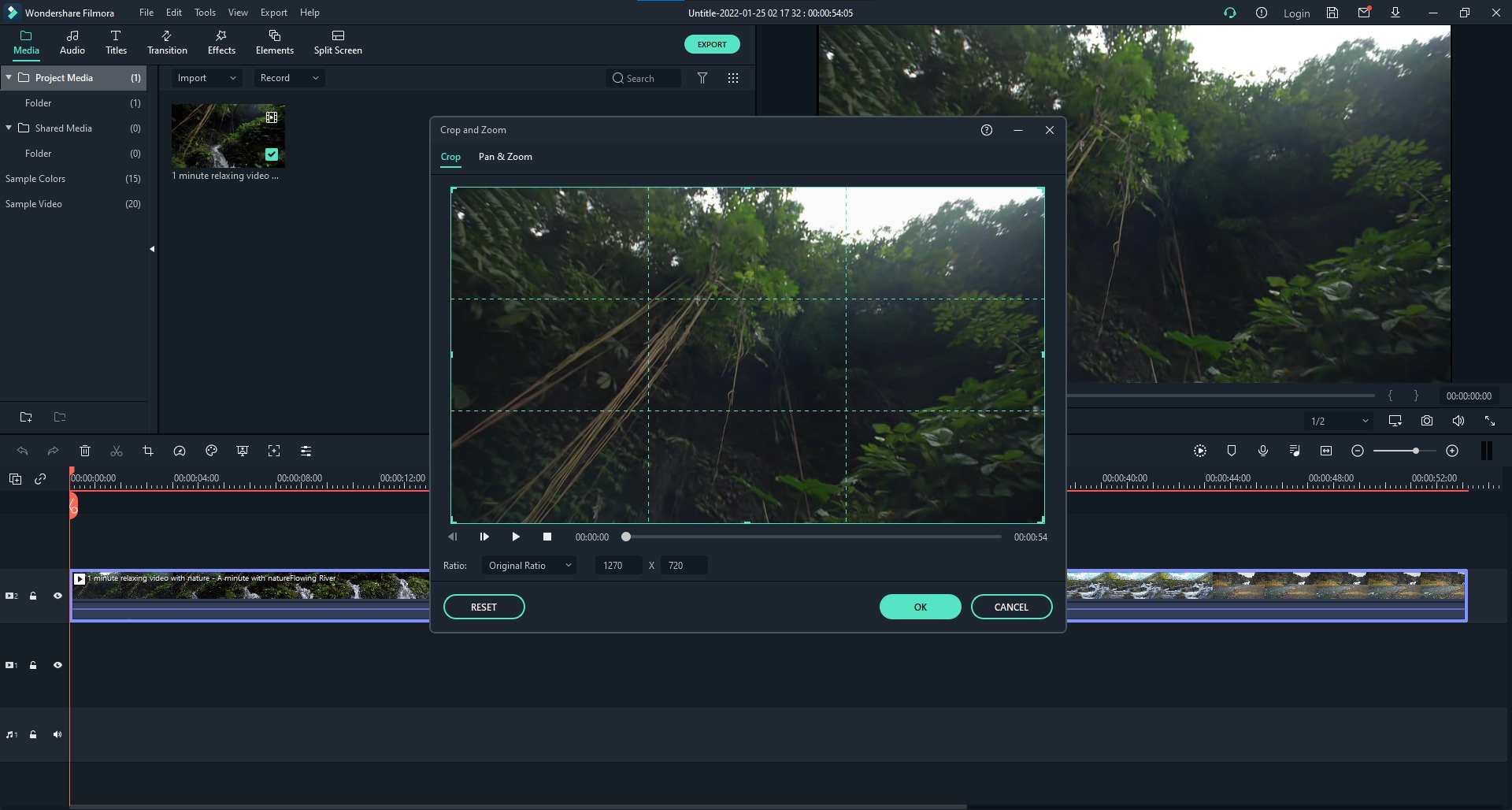
Step 4: When you’ve changed it to your liking, click the green “OK” button. As a result, you may effortlessly add or remove any element of a video clip on Filmora.


Ollie Mattison
Ollie Mattison is a writer and a lover of all things video.
Follow @Ollie Mattison
Ollie Mattison
Mar 27, 2024• Proven solutions
Cropping a video, to bring focus onto the important aspects and remove the extraneous parts of the scene, is one of the most valuable tools available to a video editor. It can be used as mentioned to ensure the viewer focuses on what is important, but also to magnify objects on the screen, such as with footage of nature. It has many uses, and one of the best tools available for cropping video is the free program Avidemux. Here we are going to go through the process of getting Avidemux running on your system and cropping some video.
If Avidemux is too complicate for you, you can consider Wondershare Filmora , which is an easy-to-use video editing tool to crop videos within several click. Download the free trial version blow.
 Download Mac Version ](https://tools.techidaily.com/wondershare/filmora/download/ )
Download Mac Version ](https://tools.techidaily.com/wondershare/filmora/download/ )
How to Crop a Video with Avidemux
1. Installation
You can find Avidemux for download here , it is available for a wide range of platforms, just download the version that fits your needs. Once downloaded, install in the standard way for your platform, this is the Wndows version (64bit).
One point of note during installation is that you can choose which parts of the program you wish to install. It is a very small footprint and for the best performance it is wise to simply install everything.

Once installed you will be presented with the program as seen here.

2. Importing Video
The next step is importing video. This can be done in two ways, by clicking the file folder icon at the top left you open a standard file browser to navigate to, and select your chosen video file, or alternatively you can simply drag you video into the main panel to import it.

Whichever route you take, you will end up with your video file loaded in like this.

Now you can edit the video as you need, Avidemux contains a wealth of features to enable the full spectrum of editing tasks to be completed. However, here we are going to look at the cropping tool, so on to the next step.
3. Editing Video
Avidemux has some idiosyncrasies in terms of operation, one of those is that to be able to edit any video, you have to choose your output format. Don’t worry though, this is easy, just use the dropdown at the side to choose the output format you want as can be seen here.

Once that is set you are free to start editing your footage.
4. Cropping
It is important to understand how the editing process works in Avidemux, everything is accessed via the filters menu Video>Filters and from here you are faced with a new interface that enables you to choose the component you wish to use.

Selecting ‘Crop’ from the menu and pressing the green plus symbol at the bottom activated the crop tool and presents you with yet another view that allows you to adjust the crop to your tastes.

5. Cropping controls
There are two options for cropping, you can use the Auto crop feature, which will detect any black lines and crop the footage between them, or if you are using the crop tool for something else, or just want to do it manually, you can set the crop via the left right top and bottom boxes. Values input here are the number of pixels from that edge the crop extends, as you are setting it, this is displayed with a green block signifying the area of the image that will be removed.

You can adjust this independently for all 4 edges as you wish.

Once you are happy with the crop, you click Ok and it takes you back to the familiar filter menu where you can use other components to perform more editing if you need.
6. Saving the crop
One of the most common points of confusion with Avidemux comes at this point, as your video will look no different to when you started, and many think they have done something wrong, but this is another part of Avidemux workflow. These filters can only be applied when the video is reencoded, and you do that through the file>save menu.

Selecting this presents the familiar export dialogue and allows you to choose the name and destination of the file. Once that is done you click OK and you will see Avidemux processing your file and re-rendering it in this dialogue box.

How long it takes will depend on a few factors, how many other effects have been added, how fast a processor your computer has, and how large and what resolution the video is. Format also plays a part in the process too, with some formats taking less time to encode than others. Once it has finished, you can view your video and see the crop in action.
As we can see, although there are a few aspects of the workflow that are a little unintuitive, cropping video in Avidemux is a straightforward process that anyone can accomplish with a bit of patience.
One of the key things to remember with Avidemux is that you apply all of your filters before re-encoding, this again is a question of patience and a bit of organization to ensure everything you wish to do is completed in order.
Avidemux is a great piece of software, it lacks the polish of some of its commercial rivals of course, but behind the sometimes clunky interface there is a very broad range of features that allow you to accomplish more or less any editing task you may want. In terms of free programs this is about as good as it gets, and the output is, without a doubt, great quality. For anyone looking for a free solution to video editing problems, and who do not mind a learning process Avidemux provides a useful tool.
An Easier Way to Crop a Video with Filmora
Filmora Video Editor is a powerful program that allows you to create stunning video clips in only a few clicks. This video editing software provides users with a variety of tools for editing videos. It also includes a user-friendly interface for editing home films on Windows PCs, Macs, and Linux devices. To crop a video, these are to follow:
Step 1: Open a video that you want to edit. Go to “Import” and choose the file that you want to upload and put it in the Media Library.

Step 2: Select the “Crop and Zoom” icon in the Filmora editing tool.

Step 3: To alter the size of the crop frame, drag the pointer from any corner of your video preview window.

Step 4: When you’ve changed it to your liking, click the green “OK” button. As a result, you may effortlessly add or remove any element of a video clip on Filmora.


Ollie Mattison
Ollie Mattison is a writer and a lover of all things video.
Follow @Ollie Mattison
Ollie Mattison
Mar 27, 2024• Proven solutions
Cropping a video, to bring focus onto the important aspects and remove the extraneous parts of the scene, is one of the most valuable tools available to a video editor. It can be used as mentioned to ensure the viewer focuses on what is important, but also to magnify objects on the screen, such as with footage of nature. It has many uses, and one of the best tools available for cropping video is the free program Avidemux. Here we are going to go through the process of getting Avidemux running on your system and cropping some video.
If Avidemux is too complicate for you, you can consider Wondershare Filmora , which is an easy-to-use video editing tool to crop videos within several click. Download the free trial version blow.
 Download Mac Version ](https://tools.techidaily.com/wondershare/filmora/download/ )
Download Mac Version ](https://tools.techidaily.com/wondershare/filmora/download/ )
How to Crop a Video with Avidemux
1. Installation
You can find Avidemux for download here , it is available for a wide range of platforms, just download the version that fits your needs. Once downloaded, install in the standard way for your platform, this is the Wndows version (64bit).
One point of note during installation is that you can choose which parts of the program you wish to install. It is a very small footprint and for the best performance it is wise to simply install everything.

Once installed you will be presented with the program as seen here.

2. Importing Video
The next step is importing video. This can be done in two ways, by clicking the file folder icon at the top left you open a standard file browser to navigate to, and select your chosen video file, or alternatively you can simply drag you video into the main panel to import it.

Whichever route you take, you will end up with your video file loaded in like this.

Now you can edit the video as you need, Avidemux contains a wealth of features to enable the full spectrum of editing tasks to be completed. However, here we are going to look at the cropping tool, so on to the next step.
3. Editing Video
Avidemux has some idiosyncrasies in terms of operation, one of those is that to be able to edit any video, you have to choose your output format. Don’t worry though, this is easy, just use the dropdown at the side to choose the output format you want as can be seen here.

Once that is set you are free to start editing your footage.
4. Cropping
It is important to understand how the editing process works in Avidemux, everything is accessed via the filters menu Video>Filters and from here you are faced with a new interface that enables you to choose the component you wish to use.

Selecting ‘Crop’ from the menu and pressing the green plus symbol at the bottom activated the crop tool and presents you with yet another view that allows you to adjust the crop to your tastes.

5. Cropping controls
There are two options for cropping, you can use the Auto crop feature, which will detect any black lines and crop the footage between them, or if you are using the crop tool for something else, or just want to do it manually, you can set the crop via the left right top and bottom boxes. Values input here are the number of pixels from that edge the crop extends, as you are setting it, this is displayed with a green block signifying the area of the image that will be removed.

You can adjust this independently for all 4 edges as you wish.

Once you are happy with the crop, you click Ok and it takes you back to the familiar filter menu where you can use other components to perform more editing if you need.
6. Saving the crop
One of the most common points of confusion with Avidemux comes at this point, as your video will look no different to when you started, and many think they have done something wrong, but this is another part of Avidemux workflow. These filters can only be applied when the video is reencoded, and you do that through the file>save menu.

Selecting this presents the familiar export dialogue and allows you to choose the name and destination of the file. Once that is done you click OK and you will see Avidemux processing your file and re-rendering it in this dialogue box.

How long it takes will depend on a few factors, how many other effects have been added, how fast a processor your computer has, and how large and what resolution the video is. Format also plays a part in the process too, with some formats taking less time to encode than others. Once it has finished, you can view your video and see the crop in action.
As we can see, although there are a few aspects of the workflow that are a little unintuitive, cropping video in Avidemux is a straightforward process that anyone can accomplish with a bit of patience.
One of the key things to remember with Avidemux is that you apply all of your filters before re-encoding, this again is a question of patience and a bit of organization to ensure everything you wish to do is completed in order.
Avidemux is a great piece of software, it lacks the polish of some of its commercial rivals of course, but behind the sometimes clunky interface there is a very broad range of features that allow you to accomplish more or less any editing task you may want. In terms of free programs this is about as good as it gets, and the output is, without a doubt, great quality. For anyone looking for a free solution to video editing problems, and who do not mind a learning process Avidemux provides a useful tool.
An Easier Way to Crop a Video with Filmora
Filmora Video Editor is a powerful program that allows you to create stunning video clips in only a few clicks. This video editing software provides users with a variety of tools for editing videos. It also includes a user-friendly interface for editing home films on Windows PCs, Macs, and Linux devices. To crop a video, these are to follow:
Step 1: Open a video that you want to edit. Go to “Import” and choose the file that you want to upload and put it in the Media Library.

Step 2: Select the “Crop and Zoom” icon in the Filmora editing tool.

Step 3: To alter the size of the crop frame, drag the pointer from any corner of your video preview window.

Step 4: When you’ve changed it to your liking, click the green “OK” button. As a result, you may effortlessly add or remove any element of a video clip on Filmora.


Ollie Mattison
Ollie Mattison is a writer and a lover of all things video.
Follow @Ollie Mattison
Ollie Mattison
Mar 27, 2024• Proven solutions
Cropping a video, to bring focus onto the important aspects and remove the extraneous parts of the scene, is one of the most valuable tools available to a video editor. It can be used as mentioned to ensure the viewer focuses on what is important, but also to magnify objects on the screen, such as with footage of nature. It has many uses, and one of the best tools available for cropping video is the free program Avidemux. Here we are going to go through the process of getting Avidemux running on your system and cropping some video.
If Avidemux is too complicate for you, you can consider Wondershare Filmora , which is an easy-to-use video editing tool to crop videos within several click. Download the free trial version blow.
 Download Mac Version ](https://tools.techidaily.com/wondershare/filmora/download/ )
Download Mac Version ](https://tools.techidaily.com/wondershare/filmora/download/ )
How to Crop a Video with Avidemux
1. Installation
You can find Avidemux for download here , it is available for a wide range of platforms, just download the version that fits your needs. Once downloaded, install in the standard way for your platform, this is the Wndows version (64bit).
One point of note during installation is that you can choose which parts of the program you wish to install. It is a very small footprint and for the best performance it is wise to simply install everything.

Once installed you will be presented with the program as seen here.

2. Importing Video
The next step is importing video. This can be done in two ways, by clicking the file folder icon at the top left you open a standard file browser to navigate to, and select your chosen video file, or alternatively you can simply drag you video into the main panel to import it.

Whichever route you take, you will end up with your video file loaded in like this.

Now you can edit the video as you need, Avidemux contains a wealth of features to enable the full spectrum of editing tasks to be completed. However, here we are going to look at the cropping tool, so on to the next step.
3. Editing Video
Avidemux has some idiosyncrasies in terms of operation, one of those is that to be able to edit any video, you have to choose your output format. Don’t worry though, this is easy, just use the dropdown at the side to choose the output format you want as can be seen here.

Once that is set you are free to start editing your footage.
4. Cropping
It is important to understand how the editing process works in Avidemux, everything is accessed via the filters menu Video>Filters and from here you are faced with a new interface that enables you to choose the component you wish to use.

Selecting ‘Crop’ from the menu and pressing the green plus symbol at the bottom activated the crop tool and presents you with yet another view that allows you to adjust the crop to your tastes.

5. Cropping controls
There are two options for cropping, you can use the Auto crop feature, which will detect any black lines and crop the footage between them, or if you are using the crop tool for something else, or just want to do it manually, you can set the crop via the left right top and bottom boxes. Values input here are the number of pixels from that edge the crop extends, as you are setting it, this is displayed with a green block signifying the area of the image that will be removed.

You can adjust this independently for all 4 edges as you wish.

Once you are happy with the crop, you click Ok and it takes you back to the familiar filter menu where you can use other components to perform more editing if you need.
6. Saving the crop
One of the most common points of confusion with Avidemux comes at this point, as your video will look no different to when you started, and many think they have done something wrong, but this is another part of Avidemux workflow. These filters can only be applied when the video is reencoded, and you do that through the file>save menu.

Selecting this presents the familiar export dialogue and allows you to choose the name and destination of the file. Once that is done you click OK and you will see Avidemux processing your file and re-rendering it in this dialogue box.

How long it takes will depend on a few factors, how many other effects have been added, how fast a processor your computer has, and how large and what resolution the video is. Format also plays a part in the process too, with some formats taking less time to encode than others. Once it has finished, you can view your video and see the crop in action.
As we can see, although there are a few aspects of the workflow that are a little unintuitive, cropping video in Avidemux is a straightforward process that anyone can accomplish with a bit of patience.
One of the key things to remember with Avidemux is that you apply all of your filters before re-encoding, this again is a question of patience and a bit of organization to ensure everything you wish to do is completed in order.
Avidemux is a great piece of software, it lacks the polish of some of its commercial rivals of course, but behind the sometimes clunky interface there is a very broad range of features that allow you to accomplish more or less any editing task you may want. In terms of free programs this is about as good as it gets, and the output is, without a doubt, great quality. For anyone looking for a free solution to video editing problems, and who do not mind a learning process Avidemux provides a useful tool.
An Easier Way to Crop a Video with Filmora
Filmora Video Editor is a powerful program that allows you to create stunning video clips in only a few clicks. This video editing software provides users with a variety of tools for editing videos. It also includes a user-friendly interface for editing home films on Windows PCs, Macs, and Linux devices. To crop a video, these are to follow:
Step 1: Open a video that you want to edit. Go to “Import” and choose the file that you want to upload and put it in the Media Library.

Step 2: Select the “Crop and Zoom” icon in the Filmora editing tool.

Step 3: To alter the size of the crop frame, drag the pointer from any corner of your video preview window.

Step 4: When you’ve changed it to your liking, click the green “OK” button. As a result, you may effortlessly add or remove any element of a video clip on Filmora.


Ollie Mattison
Ollie Mattison is a writer and a lover of all things video.
Follow @Ollie Mattison
Why Mp3 Converter for Windows Is a Game-Changer (And Why You Should Read About It)
Why This Article About Mp3 Converter Windows Deserves to Read?
An easy yet powerful editor
Numerous effects to choose from
Detailed tutorials provided by the official channel
We’ve got you there! In this article, not only have we compiled a list of the best FREE MP3 converters for Windows 10/11.
We’ve also included a list of the best MP3 editor Windows & Mac, and a list for the best MP3 player Windows & Mac! There’s even a quick tutorial in the end that can help you trim MP3 (Windows) files that you’ve converted so that you can more cleanly include it in your own project.
In this article
01 [6 Best Free MP3 Converter for Windows 10 / 11](#Part 1)
02 [6 Best Free and Paid Audio Editor for PC and Mac](#Part 2)
03 [5 MP3 Music Players for Windows 10/11 PC](#Part 3)
04 [How to Trim Mp3 on Windows 10 Easily](#Part 4)
Part 1 6 Best Free MP3 Converter for Windows 10 / 11
As promised, we start this off with the best audio converter (Windows 10/11) tools. We’ve decided to go very simple with this list, providing a brief description of all of the FREE MP3 Converters (Windows), a URL that will lead you to the website where you can get the converter, and an image that should show you how the converter’s interface looks like.
01EaseUs MobiMover
EaseUs MobiMover is an audio converter for Windows 10 and 11 that you can use in order to easily convert videos (in various formats) into MP3 (as is shown in the image below. It’s a FREEmium software though — which means that it’s use is limited until you purchase the paid version of the software.
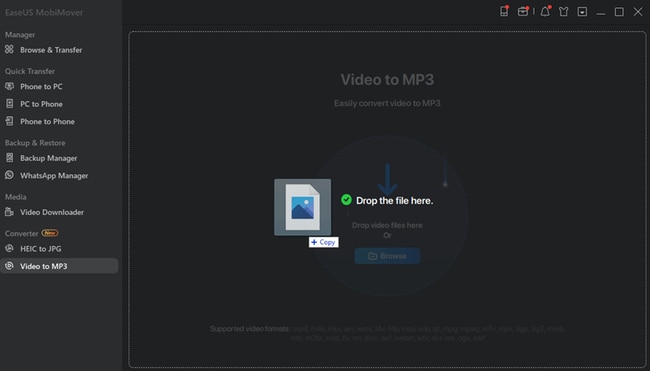
02Freemake Video Converter
Freemake Video Converter is the first 100% FREE MP3 converter for Windows 10 on this list! They keep the software updated from donations, so you can choose how much money you can spare for using the service! It’s a very simple software besides (as is shown in the image below). It does feature some video editing tools, but its main function is conversion (which includes video-to-audio conversion!)
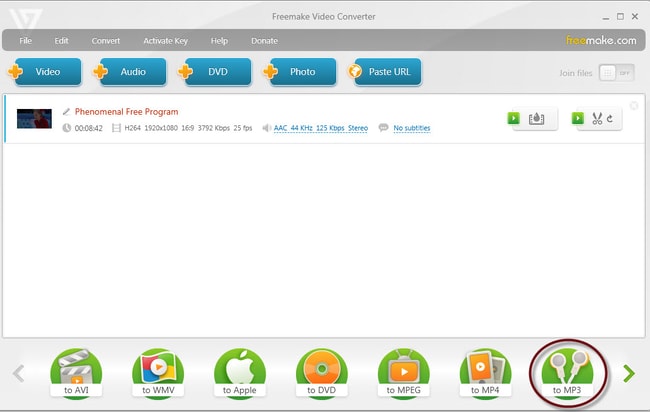
03VSDC
Much like Freemake, our next MP3 converter for Windows 10 and 11, called VSDC, is completely FREE — as they run primarily on donations. That does mean that it’s not the most advanced program though — evident from the rather old-school interface (shown in the image below). But, regardless of the lack of abundance in tools, it should function just fine as an audio-video-converter for Windows 10 (and vice versa.)
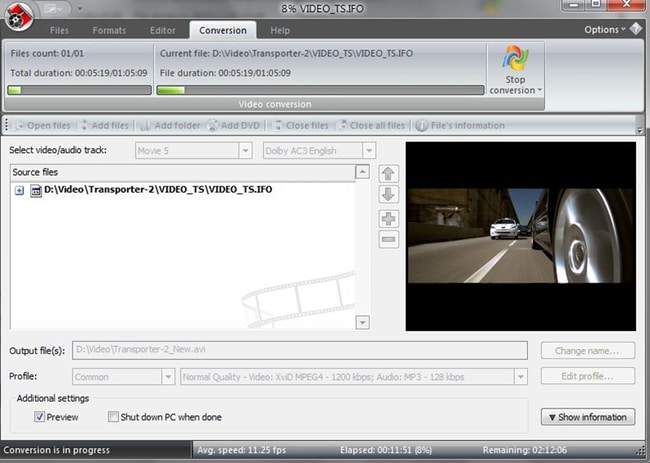
04Convertio.co
With Convertio.co, we break the mold a bit! This is not a software, but it does still work for Windows users — as it requires only that you have a working browser from which you can access the website (URL linked below!) As you can see from the image, it works much like most online MP3 converters — you upload a file from your desktop, wait for it to finish converting, and then download it!

05Free Convert
Free Convert is another online MP3 convert for Windows 10 users that would prefer not to download or install software. And, just like Covertio, it works by uploading the files you want to convert from your computer, waiting for the converters tool to finish converting it, and then downloading the finished product. It is, of course, FREE — but, similar to the first tool on this list, if you want to unlock some of its features, you’ll have to pay for the premium version.
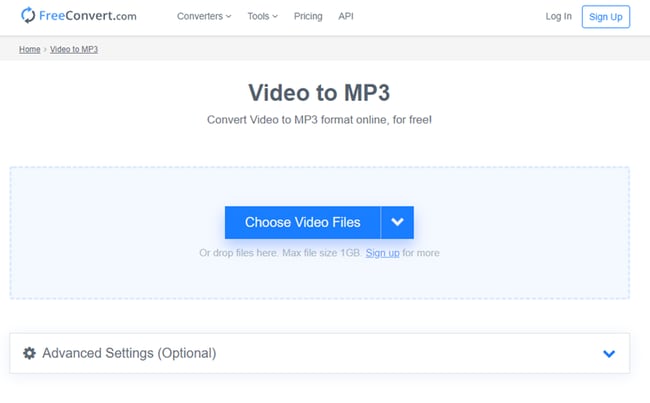
06DVDVideoSoft
With DVDVideoSoft, we’re back to an audio-video converter for Windows 10 that you have to download and install to work! It’s a FREEmium software too. That means that you’ll have to pay in order to unlock certain features. But, it works as a solid converter even without that.
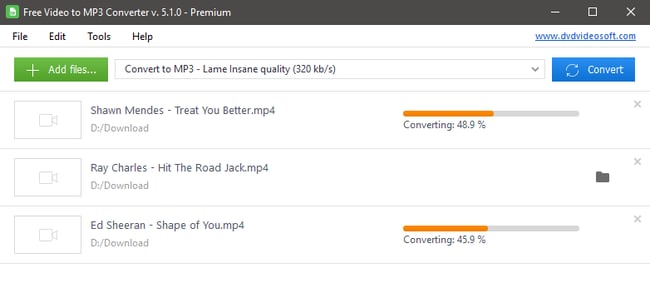
Part 2 6 Best Free and Paid Audio Editor for PC and Mac
For this next section, we turn our attention to a couple of MP3 editors (Windows 10 and Mac compatible.) This list will be a little more detailed than the first, since there are many differences between the tools that we’ll be introducing (both FREE and PAID), but it should give you a clear idea on which would work best for you.
01Wondershare Filmora
Operating System: Windows/Mac
Today’s Best Deals: US$89.99 (one-time)
The first on our list is the MP3 editor Windows 10 and Mac compatible, Wondershare Filmora Video Editor This is an advanced video editing software that you can use in order to work on just about any digital project — including, of course, editing your MP3 audio files.
Reasons to Buy:
● Lots of editing tools for MP3 files
● Exports high-quality end-products
● FREE to try, multiple-packages available
Reasons to Avoid:
● Premium software (subscription/one-time fee)
● Advanced tools might make it harder to get used to
● Download and installation is required
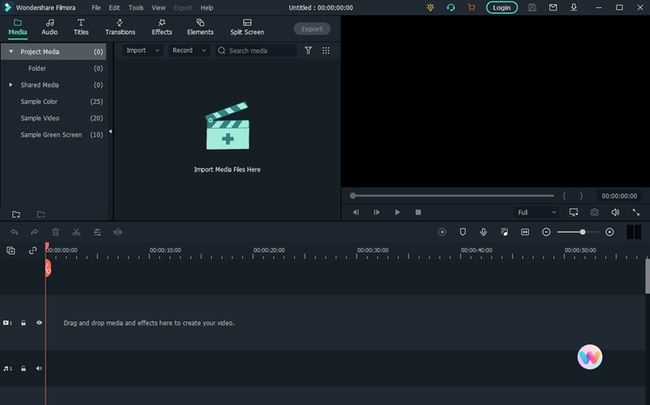
02Audacity
Operating System: Windows/Mac/Linux
Today’s Best Deals: FREE
Audacity is an MP3 editor (Windows 10, Max, and Linux compatible!) The difference between this tool and our first pick, Filmora Pro, is that Audacity is an open-source software — this means that it is free to use, but it also means that it might not be the most reliable as it is not updated quite as often.
Reasons to Buy:
● FREE, open-source software
● Advanced video and audio editing tools
● MP3 trimming/cutting feature
Reasons to Avoid:
● Not updated as often
● Confusing interface
● Difficult to use for beginners
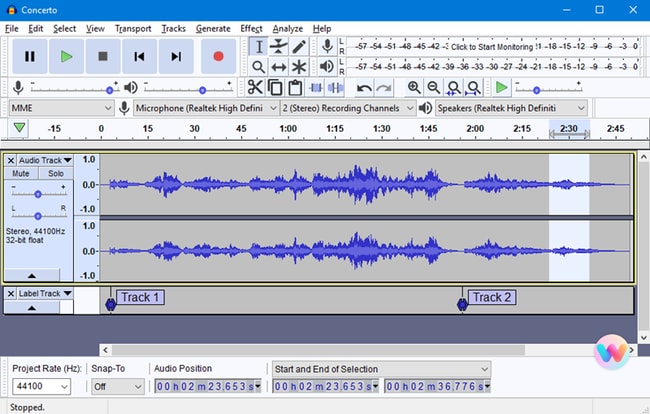
03Ashampoo Music Studio 8
Operating System: Windows
Today’s Best Deals: US$29.99
Next up is Ashampoo’s Music Studio 8! Here’s another freemium software that you can try for free — just to make sure it’s the tool that you’re looking for, but you’ll have to pay a price to use in its entirety! As you can see from the interface (shown in the image below) though, it’s quite the effective MP3 cutter for Windows 10 (among other things). So, if that’s what you’re looking for, then it’s a good choice to consider.
Reasons to Buy:
● Clean, modern interface
● Beginner-friendly editing tools
● One-time fee only
Reasons to Avoid:
● Freemium software (one-time payment required)
● Available only for Windows!
● Cannot support multiple tracks
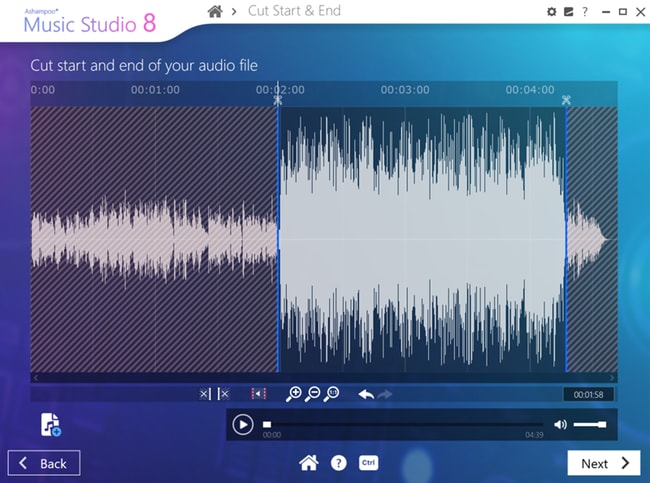
04Ocenaudio
Operating System: Windows/Mac/Linux
Today’s Best Deals: FREE
As far as audio-editing goes, you’re probably going to have a difficult time finding one that is as specialized as Ocenaudio. As you can probably guess from the name, it is, primarily, an audio editing tool. Making it a good choice if that’s all you’re looking for in a software, as it certainly keeps things simpler.
Reasons to Buy:
● Beginner-friendly audio editor
● Simple, clean interface
● Available for Windows/Mac/Linux
Reasons to Avoid:
● Older software
● Open-source, not updated as often
● Only an audio-editing software
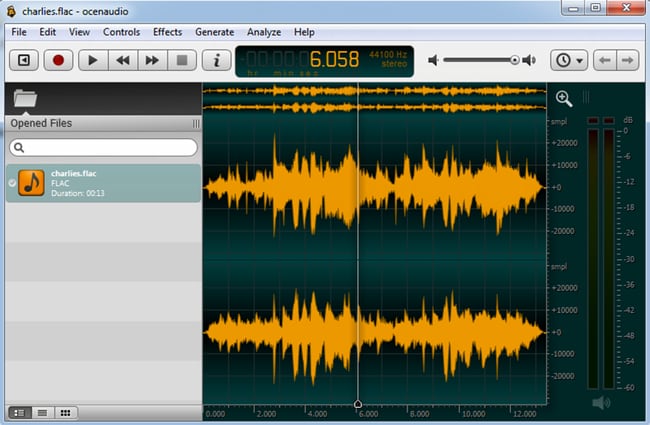
05Acoustica
Operating System: Windows
Today’s Best Deals: FREE
Our next pick is another open-source, MP3 editor for Windows 10. It’s called Acoustica. And, as you can see from the image shared below, it’s a fairly advanced audio editing tool. You should note, however, that the newer versions of this product are PAID (only older models are free), which is the topic of our discussion today.
Reasons to Buy:
● FREE, open-source product
● Advanced audio editing tools
● Advanced exporting formats
Reasons to Avoid:
● Older version of the software
● Updated version is PAID
● Available only for Windows
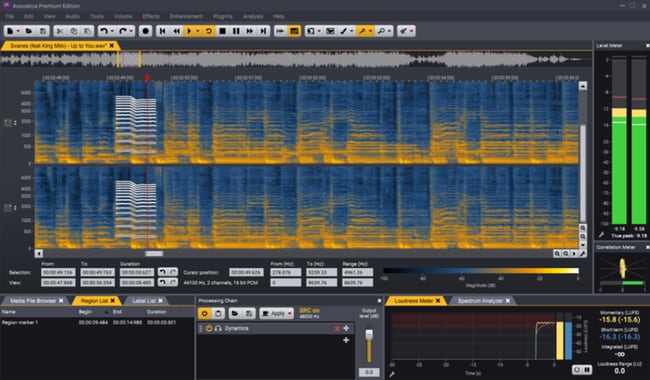
06Audiotool
Operating System: Windows/Mac/Linux
Today’s Best Deals: FREE
Finally, we finish things off with Audiotool, it’s certainly not your traditional audio editor (as is evident from the image shown below). But, the funky interface doesn’t mean that it won’t work for you! You never know, it might be exactly the kind that helps you zoom through your projects more quickly.
Reasons to Buy:
● FREE, open-source software
● Available for Windows/Mac/Linux users
● Advanced audio editing
Reasons to Avoid:
● Complex editing interface
● Requires internet to work (Linux)
● Not regularly updated
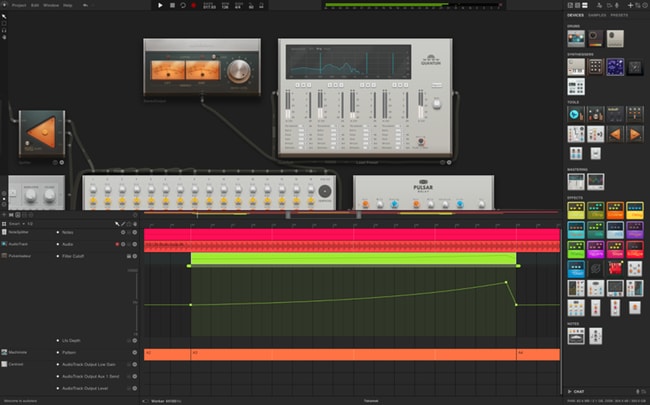
Part 3 5 MP3 Music Players for Windows 10/11 PC
The last of the lists in this article is a short one for the best MP3 players for Windows 10! This is a straightforward list, much like the first. And, we’ll be focusing on MP3 players for Windows 10 only (although some of these will work for Mac as well!)
01iTunes
Despite appearances, iTunes actually makes for a great MP3 player for Windows 10 users. After all, it’s interface is clean and it is regularly updated. So, you never have to deal with bugs! (And just in case you weren’t aware, you can add your own original audio to your iTunes library! So, it isn’t like you have to purchase media from the iTunes store just to listen to it.)

02Groove Music
Groove Music is a local Mp3 player for Windows 10 that you can download from the Microsoft App Store. It functions much like iTunes — in that you can add original music or audio to the app library (as well as purchase audio from the store — if that’s what you want.)
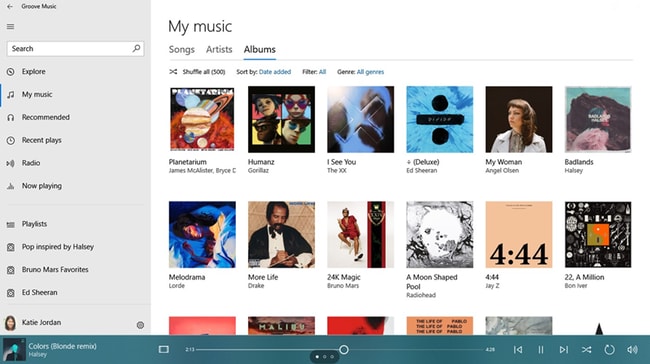
03Macgo Media Player
Our next pick, Macgo, is not strictly an MP3 player for Windows 10, but it can work for that purpose if that’s all you need it for. As a media player though, it does function as a video player as well. And, like our previous picks, it’s FREE so you don’t have to worry about paying in order to use it.
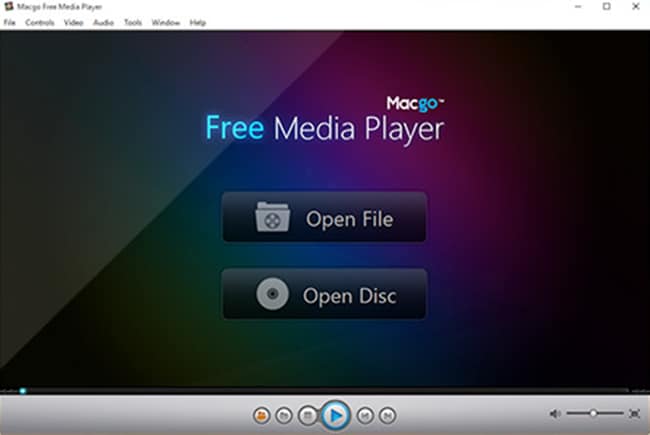
04PowerDVD
Again, our next pick is more of a general media player than strictly a MP3 Player for Windows 10 users, but it works just as well if all you’re looking for is to occasionally play the audio that you’ve converted or trimmed!
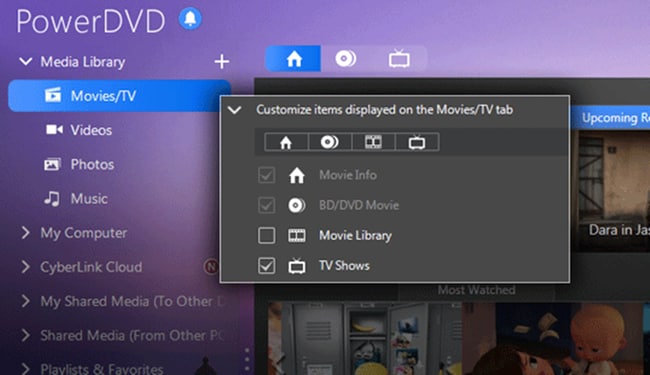
05Musicbee
We’re back to strictly MP3 players for Windows with Musicbee! The best part of this app is, undoubtedly, the fact that it has several view options. So, if you want, you have your audio playing from a mini audio player (rather than the full interface — as is shown below). It’s also useful for organizing your media collection!
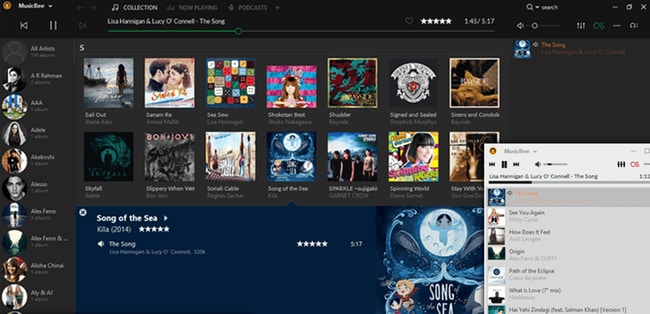
Part 4 How to Trim Mp3 on Windows 10 Easily
For this next part, we’re going to go over how you might go about trimming your converted audio with an MP3 cutter for Windows. (Note, a lot of the audio editors that we introduced in Part 2 of this article should be capable of this! And, they all work in much the same way.)
01Step 1: Launch MP3 Cutter for Windows 10! Start!
First, launch the MP3 cutter for Windows 10 that you downloaded.
For this example, we’ll be using Joyoshare Media Cutter. And, the way to start is to select the “Open” button, which will prompt you to choose which audio you want to cut.
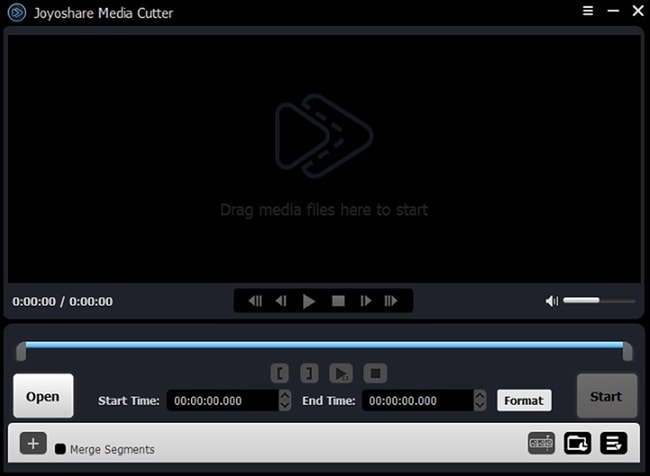
02Step 2: Choose Output Option
Next, select the output format that you want your audio to be exported in. (Most MP3 cutters for Windows 10 offers a variety for you to choose from).
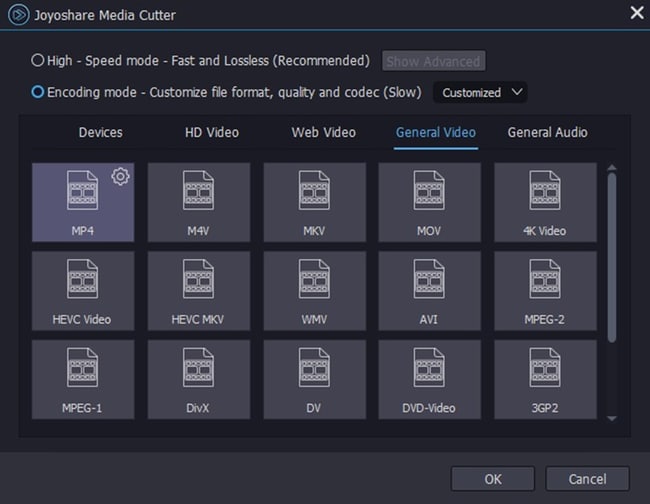
03Step 3: Select and Trim Mode!
Joyoshare has two methods of trimming available. The first is the select and trim mode, which is shown in the image below! For this, you use the sliders provider to select which portion of the audio you want to keep!

04Step 4: Use Encoder Trimmer
If you want a cleaner trim, you click the “Edit” icon beside the audio that you want to trim until you are moved to the encoder window (shown in the image below). This will allow you to pinpoint the best place to cut your audio!
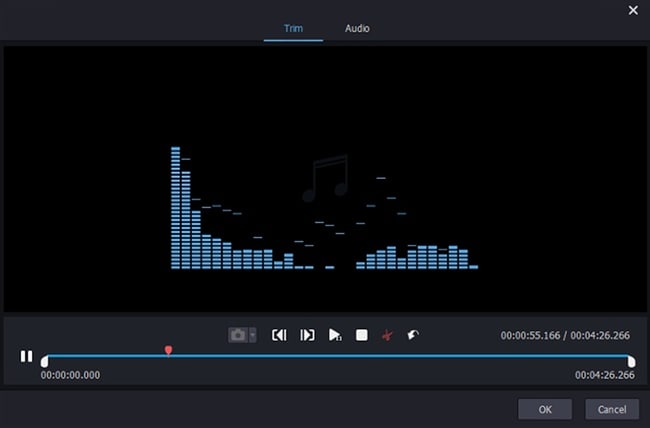
05Step 5: Save Your Audio!
Once you’re done trimming, remember to save!
With Joyoshare, the method of doing this is to select the “Start” button, which will prompt the trimmer to begin cutting the audio.
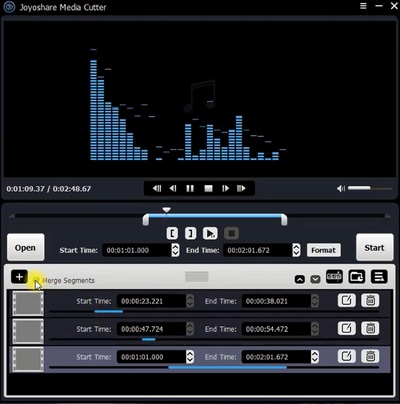
Key Takeaways from This Episode
● There are multiple MP3 converters for Windows and Mac that you can use in order to convert videos to an audio file that you can use for certain projects.
● Of course, if you want your finished project to sound clean, you’ll probably need a functional audio editor for that! And, for this matter, we recommend advanced video editing software like Filmora Pro.
● Just in case you want to review what your converted audio sounds like, consider one of the audio players that are available for Windows and Mac!
● If you find that your audio needs some trimming, a quick trim with an audio cutter should do the trick. It’s very simple to do!
We’ve got you there! In this article, not only have we compiled a list of the best FREE MP3 converters for Windows 10/11.
We’ve also included a list of the best MP3 editor Windows & Mac, and a list for the best MP3 player Windows & Mac! There’s even a quick tutorial in the end that can help you trim MP3 (Windows) files that you’ve converted so that you can more cleanly include it in your own project.
In this article
01 [6 Best Free MP3 Converter for Windows 10 / 11](#Part 1)
02 [6 Best Free and Paid Audio Editor for PC and Mac](#Part 2)
03 [5 MP3 Music Players for Windows 10/11 PC](#Part 3)
04 [How to Trim Mp3 on Windows 10 Easily](#Part 4)
Part 1 6 Best Free MP3 Converter for Windows 10 / 11
As promised, we start this off with the best audio converter (Windows 10/11) tools. We’ve decided to go very simple with this list, providing a brief description of all of the FREE MP3 Converters (Windows), a URL that will lead you to the website where you can get the converter, and an image that should show you how the converter’s interface looks like.
01EaseUs MobiMover
EaseUs MobiMover is an audio converter for Windows 10 and 11 that you can use in order to easily convert videos (in various formats) into MP3 (as is shown in the image below. It’s a FREEmium software though — which means that it’s use is limited until you purchase the paid version of the software.

02Freemake Video Converter
Freemake Video Converter is the first 100% FREE MP3 converter for Windows 10 on this list! They keep the software updated from donations, so you can choose how much money you can spare for using the service! It’s a very simple software besides (as is shown in the image below). It does feature some video editing tools, but its main function is conversion (which includes video-to-audio conversion!)

03VSDC
Much like Freemake, our next MP3 converter for Windows 10 and 11, called VSDC, is completely FREE — as they run primarily on donations. That does mean that it’s not the most advanced program though — evident from the rather old-school interface (shown in the image below). But, regardless of the lack of abundance in tools, it should function just fine as an audio-video-converter for Windows 10 (and vice versa.)

04Convertio.co
With Convertio.co, we break the mold a bit! This is not a software, but it does still work for Windows users — as it requires only that you have a working browser from which you can access the website (URL linked below!) As you can see from the image, it works much like most online MP3 converters — you upload a file from your desktop, wait for it to finish converting, and then download it!

05Free Convert
Free Convert is another online MP3 convert for Windows 10 users that would prefer not to download or install software. And, just like Covertio, it works by uploading the files you want to convert from your computer, waiting for the converters tool to finish converting it, and then downloading the finished product. It is, of course, FREE — but, similar to the first tool on this list, if you want to unlock some of its features, you’ll have to pay for the premium version.

06DVDVideoSoft
With DVDVideoSoft, we’re back to an audio-video converter for Windows 10 that you have to download and install to work! It’s a FREEmium software too. That means that you’ll have to pay in order to unlock certain features. But, it works as a solid converter even without that.

Part 2 6 Best Free and Paid Audio Editor for PC and Mac
For this next section, we turn our attention to a couple of MP3 editors (Windows 10 and Mac compatible.) This list will be a little more detailed than the first, since there are many differences between the tools that we’ll be introducing (both FREE and PAID), but it should give you a clear idea on which would work best for you.
01Wondershare Filmora
Operating System: Windows/Mac
Today’s Best Deals: US$89.99 (one-time)
The first on our list is the MP3 editor Windows 10 and Mac compatible, Wondershare Filmora Video Editor This is an advanced video editing software that you can use in order to work on just about any digital project — including, of course, editing your MP3 audio files.
Reasons to Buy:
● Lots of editing tools for MP3 files
● Exports high-quality end-products
● FREE to try, multiple-packages available
Reasons to Avoid:
● Premium software (subscription/one-time fee)
● Advanced tools might make it harder to get used to
● Download and installation is required

02Audacity
Operating System: Windows/Mac/Linux
Today’s Best Deals: FREE
Audacity is an MP3 editor (Windows 10, Max, and Linux compatible!) The difference between this tool and our first pick, Filmora Pro, is that Audacity is an open-source software — this means that it is free to use, but it also means that it might not be the most reliable as it is not updated quite as often.
Reasons to Buy:
● FREE, open-source software
● Advanced video and audio editing tools
● MP3 trimming/cutting feature
Reasons to Avoid:
● Not updated as often
● Confusing interface
● Difficult to use for beginners

03Ashampoo Music Studio 8
Operating System: Windows
Today’s Best Deals: US$29.99
Next up is Ashampoo’s Music Studio 8! Here’s another freemium software that you can try for free — just to make sure it’s the tool that you’re looking for, but you’ll have to pay a price to use in its entirety! As you can see from the interface (shown in the image below) though, it’s quite the effective MP3 cutter for Windows 10 (among other things). So, if that’s what you’re looking for, then it’s a good choice to consider.
Reasons to Buy:
● Clean, modern interface
● Beginner-friendly editing tools
● One-time fee only
Reasons to Avoid:
● Freemium software (one-time payment required)
● Available only for Windows!
● Cannot support multiple tracks

04Ocenaudio
Operating System: Windows/Mac/Linux
Today’s Best Deals: FREE
As far as audio-editing goes, you’re probably going to have a difficult time finding one that is as specialized as Ocenaudio. As you can probably guess from the name, it is, primarily, an audio editing tool. Making it a good choice if that’s all you’re looking for in a software, as it certainly keeps things simpler.
Reasons to Buy:
● Beginner-friendly audio editor
● Simple, clean interface
● Available for Windows/Mac/Linux
Reasons to Avoid:
● Older software
● Open-source, not updated as often
● Only an audio-editing software

05Acoustica
Operating System: Windows
Today’s Best Deals: FREE
Our next pick is another open-source, MP3 editor for Windows 10. It’s called Acoustica. And, as you can see from the image shared below, it’s a fairly advanced audio editing tool. You should note, however, that the newer versions of this product are PAID (only older models are free), which is the topic of our discussion today.
Reasons to Buy:
● FREE, open-source product
● Advanced audio editing tools
● Advanced exporting formats
Reasons to Avoid:
● Older version of the software
● Updated version is PAID
● Available only for Windows

06Audiotool
Operating System: Windows/Mac/Linux
Today’s Best Deals: FREE
Finally, we finish things off with Audiotool, it’s certainly not your traditional audio editor (as is evident from the image shown below). But, the funky interface doesn’t mean that it won’t work for you! You never know, it might be exactly the kind that helps you zoom through your projects more quickly.
Reasons to Buy:
● FREE, open-source software
● Available for Windows/Mac/Linux users
● Advanced audio editing
Reasons to Avoid:
● Complex editing interface
● Requires internet to work (Linux)
● Not regularly updated

Part 3 5 MP3 Music Players for Windows 10/11 PC
The last of the lists in this article is a short one for the best MP3 players for Windows 10! This is a straightforward list, much like the first. And, we’ll be focusing on MP3 players for Windows 10 only (although some of these will work for Mac as well!)
01iTunes
Despite appearances, iTunes actually makes for a great MP3 player for Windows 10 users. After all, it’s interface is clean and it is regularly updated. So, you never have to deal with bugs! (And just in case you weren’t aware, you can add your own original audio to your iTunes library! So, it isn’t like you have to purchase media from the iTunes store just to listen to it.)

02Groove Music
Groove Music is a local Mp3 player for Windows 10 that you can download from the Microsoft App Store. It functions much like iTunes — in that you can add original music or audio to the app library (as well as purchase audio from the store — if that’s what you want.)

03Macgo Media Player
Our next pick, Macgo, is not strictly an MP3 player for Windows 10, but it can work for that purpose if that’s all you need it for. As a media player though, it does function as a video player as well. And, like our previous picks, it’s FREE so you don’t have to worry about paying in order to use it.

04PowerDVD
Again, our next pick is more of a general media player than strictly a MP3 Player for Windows 10 users, but it works just as well if all you’re looking for is to occasionally play the audio that you’ve converted or trimmed!

05Musicbee
We’re back to strictly MP3 players for Windows with Musicbee! The best part of this app is, undoubtedly, the fact that it has several view options. So, if you want, you have your audio playing from a mini audio player (rather than the full interface — as is shown below). It’s also useful for organizing your media collection!

Part 4 How to Trim Mp3 on Windows 10 Easily
For this next part, we’re going to go over how you might go about trimming your converted audio with an MP3 cutter for Windows. (Note, a lot of the audio editors that we introduced in Part 2 of this article should be capable of this! And, they all work in much the same way.)
01Step 1: Launch MP3 Cutter for Windows 10! Start!
First, launch the MP3 cutter for Windows 10 that you downloaded.
For this example, we’ll be using Joyoshare Media Cutter. And, the way to start is to select the “Open” button, which will prompt you to choose which audio you want to cut.

02Step 2: Choose Output Option
Next, select the output format that you want your audio to be exported in. (Most MP3 cutters for Windows 10 offers a variety for you to choose from).

03Step 3: Select and Trim Mode!
Joyoshare has two methods of trimming available. The first is the select and trim mode, which is shown in the image below! For this, you use the sliders provider to select which portion of the audio you want to keep!

04Step 4: Use Encoder Trimmer
If you want a cleaner trim, you click the “Edit” icon beside the audio that you want to trim until you are moved to the encoder window (shown in the image below). This will allow you to pinpoint the best place to cut your audio!

05Step 5: Save Your Audio!
Once you’re done trimming, remember to save!
With Joyoshare, the method of doing this is to select the “Start” button, which will prompt the trimmer to begin cutting the audio.

Key Takeaways from This Episode
● There are multiple MP3 converters for Windows and Mac that you can use in order to convert videos to an audio file that you can use for certain projects.
● Of course, if you want your finished project to sound clean, you’ll probably need a functional audio editor for that! And, for this matter, we recommend advanced video editing software like Filmora Pro.
● Just in case you want to review what your converted audio sounds like, consider one of the audio players that are available for Windows and Mac!
● If you find that your audio needs some trimming, a quick trim with an audio cutter should do the trick. It’s very simple to do!
We’ve got you there! In this article, not only have we compiled a list of the best FREE MP3 converters for Windows 10/11.
We’ve also included a list of the best MP3 editor Windows & Mac, and a list for the best MP3 player Windows & Mac! There’s even a quick tutorial in the end that can help you trim MP3 (Windows) files that you’ve converted so that you can more cleanly include it in your own project.
In this article
01 [6 Best Free MP3 Converter for Windows 10 / 11](#Part 1)
02 [6 Best Free and Paid Audio Editor for PC and Mac](#Part 2)
03 [5 MP3 Music Players for Windows 10/11 PC](#Part 3)
04 [How to Trim Mp3 on Windows 10 Easily](#Part 4)
Part 1 6 Best Free MP3 Converter for Windows 10 / 11
As promised, we start this off with the best audio converter (Windows 10/11) tools. We’ve decided to go very simple with this list, providing a brief description of all of the FREE MP3 Converters (Windows), a URL that will lead you to the website where you can get the converter, and an image that should show you how the converter’s interface looks like.
01EaseUs MobiMover
EaseUs MobiMover is an audio converter for Windows 10 and 11 that you can use in order to easily convert videos (in various formats) into MP3 (as is shown in the image below. It’s a FREEmium software though — which means that it’s use is limited until you purchase the paid version of the software.

02Freemake Video Converter
Freemake Video Converter is the first 100% FREE MP3 converter for Windows 10 on this list! They keep the software updated from donations, so you can choose how much money you can spare for using the service! It’s a very simple software besides (as is shown in the image below). It does feature some video editing tools, but its main function is conversion (which includes video-to-audio conversion!)

03VSDC
Much like Freemake, our next MP3 converter for Windows 10 and 11, called VSDC, is completely FREE — as they run primarily on donations. That does mean that it’s not the most advanced program though — evident from the rather old-school interface (shown in the image below). But, regardless of the lack of abundance in tools, it should function just fine as an audio-video-converter for Windows 10 (and vice versa.)

04Convertio.co
With Convertio.co, we break the mold a bit! This is not a software, but it does still work for Windows users — as it requires only that you have a working browser from which you can access the website (URL linked below!) As you can see from the image, it works much like most online MP3 converters — you upload a file from your desktop, wait for it to finish converting, and then download it!

05Free Convert
Free Convert is another online MP3 convert for Windows 10 users that would prefer not to download or install software. And, just like Covertio, it works by uploading the files you want to convert from your computer, waiting for the converters tool to finish converting it, and then downloading the finished product. It is, of course, FREE — but, similar to the first tool on this list, if you want to unlock some of its features, you’ll have to pay for the premium version.

06DVDVideoSoft
With DVDVideoSoft, we’re back to an audio-video converter for Windows 10 that you have to download and install to work! It’s a FREEmium software too. That means that you’ll have to pay in order to unlock certain features. But, it works as a solid converter even without that.

Part 2 6 Best Free and Paid Audio Editor for PC and Mac
For this next section, we turn our attention to a couple of MP3 editors (Windows 10 and Mac compatible.) This list will be a little more detailed than the first, since there are many differences between the tools that we’ll be introducing (both FREE and PAID), but it should give you a clear idea on which would work best for you.
01Wondershare Filmora
Operating System: Windows/Mac
Today’s Best Deals: US$89.99 (one-time)
The first on our list is the MP3 editor Windows 10 and Mac compatible, Wondershare Filmora Video Editor This is an advanced video editing software that you can use in order to work on just about any digital project — including, of course, editing your MP3 audio files.
Reasons to Buy:
● Lots of editing tools for MP3 files
● Exports high-quality end-products
● FREE to try, multiple-packages available
Reasons to Avoid:
● Premium software (subscription/one-time fee)
● Advanced tools might make it harder to get used to
● Download and installation is required

02Audacity
Operating System: Windows/Mac/Linux
Today’s Best Deals: FREE
Audacity is an MP3 editor (Windows 10, Max, and Linux compatible!) The difference between this tool and our first pick, Filmora Pro, is that Audacity is an open-source software — this means that it is free to use, but it also means that it might not be the most reliable as it is not updated quite as often.
Reasons to Buy:
● FREE, open-source software
● Advanced video and audio editing tools
● MP3 trimming/cutting feature
Reasons to Avoid:
● Not updated as often
● Confusing interface
● Difficult to use for beginners

03Ashampoo Music Studio 8
Operating System: Windows
Today’s Best Deals: US$29.99
Next up is Ashampoo’s Music Studio 8! Here’s another freemium software that you can try for free — just to make sure it’s the tool that you’re looking for, but you’ll have to pay a price to use in its entirety! As you can see from the interface (shown in the image below) though, it’s quite the effective MP3 cutter for Windows 10 (among other things). So, if that’s what you’re looking for, then it’s a good choice to consider.
Reasons to Buy:
● Clean, modern interface
● Beginner-friendly editing tools
● One-time fee only
Reasons to Avoid:
● Freemium software (one-time payment required)
● Available only for Windows!
● Cannot support multiple tracks

04Ocenaudio
Operating System: Windows/Mac/Linux
Today’s Best Deals: FREE
As far as audio-editing goes, you’re probably going to have a difficult time finding one that is as specialized as Ocenaudio. As you can probably guess from the name, it is, primarily, an audio editing tool. Making it a good choice if that’s all you’re looking for in a software, as it certainly keeps things simpler.
Reasons to Buy:
● Beginner-friendly audio editor
● Simple, clean interface
● Available for Windows/Mac/Linux
Reasons to Avoid:
● Older software
● Open-source, not updated as often
● Only an audio-editing software

05Acoustica
Operating System: Windows
Today’s Best Deals: FREE
Our next pick is another open-source, MP3 editor for Windows 10. It’s called Acoustica. And, as you can see from the image shared below, it’s a fairly advanced audio editing tool. You should note, however, that the newer versions of this product are PAID (only older models are free), which is the topic of our discussion today.
Reasons to Buy:
● FREE, open-source product
● Advanced audio editing tools
● Advanced exporting formats
Reasons to Avoid:
● Older version of the software
● Updated version is PAID
● Available only for Windows

06Audiotool
Operating System: Windows/Mac/Linux
Today’s Best Deals: FREE
Finally, we finish things off with Audiotool, it’s certainly not your traditional audio editor (as is evident from the image shown below). But, the funky interface doesn’t mean that it won’t work for you! You never know, it might be exactly the kind that helps you zoom through your projects more quickly.
Reasons to Buy:
● FREE, open-source software
● Available for Windows/Mac/Linux users
● Advanced audio editing
Reasons to Avoid:
● Complex editing interface
● Requires internet to work (Linux)
● Not regularly updated

Part 3 5 MP3 Music Players for Windows 10/11 PC
The last of the lists in this article is a short one for the best MP3 players for Windows 10! This is a straightforward list, much like the first. And, we’ll be focusing on MP3 players for Windows 10 only (although some of these will work for Mac as well!)
01iTunes
Despite appearances, iTunes actually makes for a great MP3 player for Windows 10 users. After all, it’s interface is clean and it is regularly updated. So, you never have to deal with bugs! (And just in case you weren’t aware, you can add your own original audio to your iTunes library! So, it isn’t like you have to purchase media from the iTunes store just to listen to it.)

02Groove Music
Groove Music is a local Mp3 player for Windows 10 that you can download from the Microsoft App Store. It functions much like iTunes — in that you can add original music or audio to the app library (as well as purchase audio from the store — if that’s what you want.)

03Macgo Media Player
Our next pick, Macgo, is not strictly an MP3 player for Windows 10, but it can work for that purpose if that’s all you need it for. As a media player though, it does function as a video player as well. And, like our previous picks, it’s FREE so you don’t have to worry about paying in order to use it.

04PowerDVD
Again, our next pick is more of a general media player than strictly a MP3 Player for Windows 10 users, but it works just as well if all you’re looking for is to occasionally play the audio that you’ve converted or trimmed!

05Musicbee
We’re back to strictly MP3 players for Windows with Musicbee! The best part of this app is, undoubtedly, the fact that it has several view options. So, if you want, you have your audio playing from a mini audio player (rather than the full interface — as is shown below). It’s also useful for organizing your media collection!

Part 4 How to Trim Mp3 on Windows 10 Easily
For this next part, we’re going to go over how you might go about trimming your converted audio with an MP3 cutter for Windows. (Note, a lot of the audio editors that we introduced in Part 2 of this article should be capable of this! And, they all work in much the same way.)
01Step 1: Launch MP3 Cutter for Windows 10! Start!
First, launch the MP3 cutter for Windows 10 that you downloaded.
For this example, we’ll be using Joyoshare Media Cutter. And, the way to start is to select the “Open” button, which will prompt you to choose which audio you want to cut.

02Step 2: Choose Output Option
Next, select the output format that you want your audio to be exported in. (Most MP3 cutters for Windows 10 offers a variety for you to choose from).

03Step 3: Select and Trim Mode!
Joyoshare has two methods of trimming available. The first is the select and trim mode, which is shown in the image below! For this, you use the sliders provider to select which portion of the audio you want to keep!

04Step 4: Use Encoder Trimmer
If you want a cleaner trim, you click the “Edit” icon beside the audio that you want to trim until you are moved to the encoder window (shown in the image below). This will allow you to pinpoint the best place to cut your audio!

05Step 5: Save Your Audio!
Once you’re done trimming, remember to save!
With Joyoshare, the method of doing this is to select the “Start” button, which will prompt the trimmer to begin cutting the audio.

Key Takeaways from This Episode
● There are multiple MP3 converters for Windows and Mac that you can use in order to convert videos to an audio file that you can use for certain projects.
● Of course, if you want your finished project to sound clean, you’ll probably need a functional audio editor for that! And, for this matter, we recommend advanced video editing software like Filmora Pro.
● Just in case you want to review what your converted audio sounds like, consider one of the audio players that are available for Windows and Mac!
● If you find that your audio needs some trimming, a quick trim with an audio cutter should do the trick. It’s very simple to do!
We’ve got you there! In this article, not only have we compiled a list of the best FREE MP3 converters for Windows 10/11.
We’ve also included a list of the best MP3 editor Windows & Mac, and a list for the best MP3 player Windows & Mac! There’s even a quick tutorial in the end that can help you trim MP3 (Windows) files that you’ve converted so that you can more cleanly include it in your own project.
In this article
01 [6 Best Free MP3 Converter for Windows 10 / 11](#Part 1)
02 [6 Best Free and Paid Audio Editor for PC and Mac](#Part 2)
03 [5 MP3 Music Players for Windows 10/11 PC](#Part 3)
04 [How to Trim Mp3 on Windows 10 Easily](#Part 4)
Part 1 6 Best Free MP3 Converter for Windows 10 / 11
As promised, we start this off with the best audio converter (Windows 10/11) tools. We’ve decided to go very simple with this list, providing a brief description of all of the FREE MP3 Converters (Windows), a URL that will lead you to the website where you can get the converter, and an image that should show you how the converter’s interface looks like.
01EaseUs MobiMover
EaseUs MobiMover is an audio converter for Windows 10 and 11 that you can use in order to easily convert videos (in various formats) into MP3 (as is shown in the image below. It’s a FREEmium software though — which means that it’s use is limited until you purchase the paid version of the software.

02Freemake Video Converter
Freemake Video Converter is the first 100% FREE MP3 converter for Windows 10 on this list! They keep the software updated from donations, so you can choose how much money you can spare for using the service! It’s a very simple software besides (as is shown in the image below). It does feature some video editing tools, but its main function is conversion (which includes video-to-audio conversion!)

03VSDC
Much like Freemake, our next MP3 converter for Windows 10 and 11, called VSDC, is completely FREE — as they run primarily on donations. That does mean that it’s not the most advanced program though — evident from the rather old-school interface (shown in the image below). But, regardless of the lack of abundance in tools, it should function just fine as an audio-video-converter for Windows 10 (and vice versa.)

04Convertio.co
With Convertio.co, we break the mold a bit! This is not a software, but it does still work for Windows users — as it requires only that you have a working browser from which you can access the website (URL linked below!) As you can see from the image, it works much like most online MP3 converters — you upload a file from your desktop, wait for it to finish converting, and then download it!

05Free Convert
Free Convert is another online MP3 convert for Windows 10 users that would prefer not to download or install software. And, just like Covertio, it works by uploading the files you want to convert from your computer, waiting for the converters tool to finish converting it, and then downloading the finished product. It is, of course, FREE — but, similar to the first tool on this list, if you want to unlock some of its features, you’ll have to pay for the premium version.

06DVDVideoSoft
With DVDVideoSoft, we’re back to an audio-video converter for Windows 10 that you have to download and install to work! It’s a FREEmium software too. That means that you’ll have to pay in order to unlock certain features. But, it works as a solid converter even without that.

Part 2 6 Best Free and Paid Audio Editor for PC and Mac
For this next section, we turn our attention to a couple of MP3 editors (Windows 10 and Mac compatible.) This list will be a little more detailed than the first, since there are many differences between the tools that we’ll be introducing (both FREE and PAID), but it should give you a clear idea on which would work best for you.
01Wondershare Filmora
Operating System: Windows/Mac
Today’s Best Deals: US$89.99 (one-time)
The first on our list is the MP3 editor Windows 10 and Mac compatible, Wondershare Filmora Video Editor This is an advanced video editing software that you can use in order to work on just about any digital project — including, of course, editing your MP3 audio files.
Reasons to Buy:
● Lots of editing tools for MP3 files
● Exports high-quality end-products
● FREE to try, multiple-packages available
Reasons to Avoid:
● Premium software (subscription/one-time fee)
● Advanced tools might make it harder to get used to
● Download and installation is required

02Audacity
Operating System: Windows/Mac/Linux
Today’s Best Deals: FREE
Audacity is an MP3 editor (Windows 10, Max, and Linux compatible!) The difference between this tool and our first pick, Filmora Pro, is that Audacity is an open-source software — this means that it is free to use, but it also means that it might not be the most reliable as it is not updated quite as often.
Reasons to Buy:
● FREE, open-source software
● Advanced video and audio editing tools
● MP3 trimming/cutting feature
Reasons to Avoid:
● Not updated as often
● Confusing interface
● Difficult to use for beginners

03Ashampoo Music Studio 8
Operating System: Windows
Today’s Best Deals: US$29.99
Next up is Ashampoo’s Music Studio 8! Here’s another freemium software that you can try for free — just to make sure it’s the tool that you’re looking for, but you’ll have to pay a price to use in its entirety! As you can see from the interface (shown in the image below) though, it’s quite the effective MP3 cutter for Windows 10 (among other things). So, if that’s what you’re looking for, then it’s a good choice to consider.
Reasons to Buy:
● Clean, modern interface
● Beginner-friendly editing tools
● One-time fee only
Reasons to Avoid:
● Freemium software (one-time payment required)
● Available only for Windows!
● Cannot support multiple tracks

04Ocenaudio
Operating System: Windows/Mac/Linux
Today’s Best Deals: FREE
As far as audio-editing goes, you’re probably going to have a difficult time finding one that is as specialized as Ocenaudio. As you can probably guess from the name, it is, primarily, an audio editing tool. Making it a good choice if that’s all you’re looking for in a software, as it certainly keeps things simpler.
Reasons to Buy:
● Beginner-friendly audio editor
● Simple, clean interface
● Available for Windows/Mac/Linux
Reasons to Avoid:
● Older software
● Open-source, not updated as often
● Only an audio-editing software

05Acoustica
Operating System: Windows
Today’s Best Deals: FREE
Our next pick is another open-source, MP3 editor for Windows 10. It’s called Acoustica. And, as you can see from the image shared below, it’s a fairly advanced audio editing tool. You should note, however, that the newer versions of this product are PAID (only older models are free), which is the topic of our discussion today.
Reasons to Buy:
● FREE, open-source product
● Advanced audio editing tools
● Advanced exporting formats
Reasons to Avoid:
● Older version of the software
● Updated version is PAID
● Available only for Windows

06Audiotool
Operating System: Windows/Mac/Linux
Today’s Best Deals: FREE
Finally, we finish things off with Audiotool, it’s certainly not your traditional audio editor (as is evident from the image shown below). But, the funky interface doesn’t mean that it won’t work for you! You never know, it might be exactly the kind that helps you zoom through your projects more quickly.
Reasons to Buy:
● FREE, open-source software
● Available for Windows/Mac/Linux users
● Advanced audio editing
Reasons to Avoid:
● Complex editing interface
● Requires internet to work (Linux)
● Not regularly updated

Part 3 5 MP3 Music Players for Windows 10/11 PC
The last of the lists in this article is a short one for the best MP3 players for Windows 10! This is a straightforward list, much like the first. And, we’ll be focusing on MP3 players for Windows 10 only (although some of these will work for Mac as well!)
01iTunes
Despite appearances, iTunes actually makes for a great MP3 player for Windows 10 users. After all, it’s interface is clean and it is regularly updated. So, you never have to deal with bugs! (And just in case you weren’t aware, you can add your own original audio to your iTunes library! So, it isn’t like you have to purchase media from the iTunes store just to listen to it.)

02Groove Music
Groove Music is a local Mp3 player for Windows 10 that you can download from the Microsoft App Store. It functions much like iTunes — in that you can add original music or audio to the app library (as well as purchase audio from the store — if that’s what you want.)

03Macgo Media Player
Our next pick, Macgo, is not strictly an MP3 player for Windows 10, but it can work for that purpose if that’s all you need it for. As a media player though, it does function as a video player as well. And, like our previous picks, it’s FREE so you don’t have to worry about paying in order to use it.

04PowerDVD
Again, our next pick is more of a general media player than strictly a MP3 Player for Windows 10 users, but it works just as well if all you’re looking for is to occasionally play the audio that you’ve converted or trimmed!

05Musicbee
We’re back to strictly MP3 players for Windows with Musicbee! The best part of this app is, undoubtedly, the fact that it has several view options. So, if you want, you have your audio playing from a mini audio player (rather than the full interface — as is shown below). It’s also useful for organizing your media collection!

Part 4 How to Trim Mp3 on Windows 10 Easily
For this next part, we’re going to go over how you might go about trimming your converted audio with an MP3 cutter for Windows. (Note, a lot of the audio editors that we introduced in Part 2 of this article should be capable of this! And, they all work in much the same way.)
01Step 1: Launch MP3 Cutter for Windows 10! Start!
First, launch the MP3 cutter for Windows 10 that you downloaded.
For this example, we’ll be using Joyoshare Media Cutter. And, the way to start is to select the “Open” button, which will prompt you to choose which audio you want to cut.

02Step 2: Choose Output Option
Next, select the output format that you want your audio to be exported in. (Most MP3 cutters for Windows 10 offers a variety for you to choose from).

03Step 3: Select and Trim Mode!
Joyoshare has two methods of trimming available. The first is the select and trim mode, which is shown in the image below! For this, you use the sliders provider to select which portion of the audio you want to keep!

04Step 4: Use Encoder Trimmer
If you want a cleaner trim, you click the “Edit” icon beside the audio that you want to trim until you are moved to the encoder window (shown in the image below). This will allow you to pinpoint the best place to cut your audio!

05Step 5: Save Your Audio!
Once you’re done trimming, remember to save!
With Joyoshare, the method of doing this is to select the “Start” button, which will prompt the trimmer to begin cutting the audio.

Key Takeaways from This Episode
● There are multiple MP3 converters for Windows and Mac that you can use in order to convert videos to an audio file that you can use for certain projects.
● Of course, if you want your finished project to sound clean, you’ll probably need a functional audio editor for that! And, for this matter, we recommend advanced video editing software like Filmora Pro.
● Just in case you want to review what your converted audio sounds like, consider one of the audio players that are available for Windows and Mac!
● If you find that your audio needs some trimming, a quick trim with an audio cutter should do the trick. It’s very simple to do!
The XML File Crash Course for FCPX Editors
What is an XML File and How to Export XML in Final Cut Pro X?

Shanoon Cox
Mar 27, 2024• Proven solutions
The XML files have multiple usages and contain the tags and texts as their main components. The purpose of the XML file is to format the data to aid in optimal storage and transfer process. The XML file consists of tags and texts. This tag contains the main elements of the file, and the text carries readable information.
Unlike HTML, the Extensible Markup Language describes the data content in a readable format without any complex codes. It is easy to understand and displays a clear illustration of the purpose. You can find the applications of XML in web publishing, to perform web tasks, and common uses like data storage, transfers.
Most users opt for XML due to its compatible features, readability, and personalization options. In this article, you will learn how to import and export XML files in the Final Cut Pro application. Use the below guidelines to carry out the desired process successfully. It is high time to get ready for an informative takeoff. Fasten your seats for the enlightening journey on the XML file at the Final cut pro X program.
- [Part1: What is the XML file in Final cut pro X? ](#what is XML)
- [Part2: Why exporting XML in final cut pro instead?](#export XML)
- [Part3: How to import and export XML files in Final cut pro X?](#how to do it)
- Part4: What editors can import and export XML files?

Part 1: What is the XML file in Final cut pro X?
XML, or Extensible Markup Language, can be imported and exported in Final Cut Pro. The best way to transfer the Final cut pro X files to any other third-party application is to use the XML format. Many programs do not recognize the file format of Final cut pro X documents. To convert it as a readable file, transfer the output in the form of XML type.
Most users may refine or edit the Final cut pro X files further to achieve their desired outcomes. To overcome the file compatibility issues, you must adopt the XML file pattern.
The sole purpose of the XML file is to avoid the complexity in transferring the data files like libraries, media, projects from the Final cut pro X app to another application. It minimizes the difficulties in handling the export procedure of the edited media files.
Despite ample methodologies in the digital space, XML is the simplest way to overcome unnecessary compatibility issues. You can convert the output files to a flexible format for a better transfer process. All forms of metadata, documents transfers occur using the XML file.
The handling comforts aid the usage of XML in the Final Cut Pro X ambiance. Quick processing is feasible with this file format and you can export them based on your needs. The simple texts with faster transfer persuade the editors to opt for this format. This Markup language is easy to understand, and you need not require any technical skills to understand the XML content.
The tags and texts reveal the standard operation of that file. You can work on the XML fine in your comforts unlike the other file types in the digital space. The Final Cut Pro X editors use the XML file to import and export the media file’s components, libraries, events for further processing. The XML serves as a comfortable file type to edit on the FINAL CUT PRO X platform.
Part 2: Why exporting XML in final cut pro instead?
You must be wondering, why do you need to export the XML file from the Final Cut Pro X environment? What are benefits do you achieve in transferring this XML content from this ambiance? Here comes the solutions for your queries in detail for better understanding.
- For further editing
As you all know that, the foremost purpose of Final Cut Pro X is to edit, store and transfer the media files based on the requirement. In case, if you want to make a unique edit on the processed videos, then you must transfer the edited clips to the desired applications.
In this scenario, you require a reliable file format to carry the meta details of the edited videos. There is a need to export the XML file to the FINAL CUT PRO X platform. To make further edits, you must transfer the entire project to the editing tools without any data loss.
- For teamworking
If you are working in groups, make your edits to be visible to your teammates. It requires a quick share of your projects from Final Cut Pro X to any other platform. To serve this purpose, export the XML files. XML file format assists in faster shares and lossless transfer to any required ambiance.
In addition, Filmora is even easier for team-working, click to see how .
- To transfer projects, clips, and libraries to other APP or devices
The XML file carries the metadata elements of the projects. It contains crucial components like libraries, clips. Moreover, the XML format helps to overcome compatibility issues. You can transfer them to any application or device and disclose them in no time.
It acts as a standard file type to handle many digital spaces flawlessly. If there is a need for the edited XML files in Final Cut Pro X, immediately transfer them to the necessary apps or devices for further processing.
Part 3: How to import and export XML files in Final cut pro X?
The next question that arises quickly after surfing the above content is how to import and export the XML files in the Final Cut Pro X tool for further editing purposes.
In this section, you will discover efficient steps to carry out the transfer process flawlessly. It ensures lossless transfer and the XML files moves at a rapid rate to the desired ambiance from the Final Cut Pro X tool.
To import the XML file in the Final Cut Pro X program, follow the below guidelines.
Step 1: Open the Final cut pro X app on your device, then tap the File Menu at the top bar of the screen. From the dropdown list choose ‘Import -> XML’ option.
Step 2: Surf the folders in your device and select the desired XML file that requires the import action. Hit the ‘Import’ button to load the XML file into the Final Cut Pro X platform.

Another method to import the XML file into the Final Cut Pro X ambiance is that you can drag the XML files directly into the working environment of this program.
Next, you can learn how to export the XML files from the Final Cut Pro X tool for further edit and processing activities.
Step 1: Open the Final Cut Pro X program, choose the libraries or events that require the export process. Then, tap ‘File -> Export XML’. Type in the name for this XML file and choose the desired folder in your system for quick access.
Step 2: Enable the Metadata view pop-up to witness the data in the structured format. Select the XML version and press the ‘Save’ button to complete the export process.

The XML file is available in your system, and you can use it at any application for further processing.
Both the import and export process in Final Cut Pro X is simple, and you can try them without any issues. Few clicks are enough to complete the procedure flawlessly.
Part 4: What editors can import and export XML files?
There are surplus video editors available in the digital market to work with XML files to acquire the enhanced version of the clips. iMovie and Lumafusion programs can imports and exports the XML files to make depth edits as per the needs.
The iMovie application encourages the editors to import the XML files into its working timeline quickly. Simple drag and drop actions are enough to complete the import procedure. Insert the XML file in the timeline and make the necessary edits like trim, crop according to your requirement.
The Lumafusion is a renowned program that edits videos optimally on the iOS platform. You can import the XML files into this environment in no time. Press the ‘File -> Import’ option and navigate the folders to include the XML file into this video editor timeline. Using the built-in features of this app, make the perfect edits to suit your needs without any compromises.

Conclusion
Thus, you had an insightful discussion on the XML files and their associated import and export procedures in the Final Cut Pro X program. Use the above content to work with the XML files effectively.
The stepwise guidelines will aid you to tap the perfect controls for successful insertion and the transfer of the XML data. The glimpses of the video editing tools help you to understand that you can import the XML data for further edits.
This article had given you enlightening facts about XML and its importance during the transfer and storage process. Connect with this article to discover the role of XML in organizing the vital data and its associated imports and exports in the Final cut pro X program.

Shanoon Cox
Shanoon Cox is a writer and a lover of all things video.
Follow @Shanoon Cox
Shanoon Cox
Mar 27, 2024• Proven solutions
The XML files have multiple usages and contain the tags and texts as their main components. The purpose of the XML file is to format the data to aid in optimal storage and transfer process. The XML file consists of tags and texts. This tag contains the main elements of the file, and the text carries readable information.
Unlike HTML, the Extensible Markup Language describes the data content in a readable format without any complex codes. It is easy to understand and displays a clear illustration of the purpose. You can find the applications of XML in web publishing, to perform web tasks, and common uses like data storage, transfers.
Most users opt for XML due to its compatible features, readability, and personalization options. In this article, you will learn how to import and export XML files in the Final Cut Pro application. Use the below guidelines to carry out the desired process successfully. It is high time to get ready for an informative takeoff. Fasten your seats for the enlightening journey on the XML file at the Final cut pro X program.
- [Part1: What is the XML file in Final cut pro X? ](#what is XML)
- [Part2: Why exporting XML in final cut pro instead?](#export XML)
- [Part3: How to import and export XML files in Final cut pro X?](#how to do it)
- Part4: What editors can import and export XML files?

Part 1: What is the XML file in Final cut pro X?
XML, or Extensible Markup Language, can be imported and exported in Final Cut Pro. The best way to transfer the Final cut pro X files to any other third-party application is to use the XML format. Many programs do not recognize the file format of Final cut pro X documents. To convert it as a readable file, transfer the output in the form of XML type.
Most users may refine or edit the Final cut pro X files further to achieve their desired outcomes. To overcome the file compatibility issues, you must adopt the XML file pattern.
The sole purpose of the XML file is to avoid the complexity in transferring the data files like libraries, media, projects from the Final cut pro X app to another application. It minimizes the difficulties in handling the export procedure of the edited media files.
Despite ample methodologies in the digital space, XML is the simplest way to overcome unnecessary compatibility issues. You can convert the output files to a flexible format for a better transfer process. All forms of metadata, documents transfers occur using the XML file.
The handling comforts aid the usage of XML in the Final Cut Pro X ambiance. Quick processing is feasible with this file format and you can export them based on your needs. The simple texts with faster transfer persuade the editors to opt for this format. This Markup language is easy to understand, and you need not require any technical skills to understand the XML content.
The tags and texts reveal the standard operation of that file. You can work on the XML fine in your comforts unlike the other file types in the digital space. The Final Cut Pro X editors use the XML file to import and export the media file’s components, libraries, events for further processing. The XML serves as a comfortable file type to edit on the FINAL CUT PRO X platform.
Part 2: Why exporting XML in final cut pro instead?
You must be wondering, why do you need to export the XML file from the Final Cut Pro X environment? What are benefits do you achieve in transferring this XML content from this ambiance? Here comes the solutions for your queries in detail for better understanding.
- For further editing
As you all know that, the foremost purpose of Final Cut Pro X is to edit, store and transfer the media files based on the requirement. In case, if you want to make a unique edit on the processed videos, then you must transfer the edited clips to the desired applications.
In this scenario, you require a reliable file format to carry the meta details of the edited videos. There is a need to export the XML file to the FINAL CUT PRO X platform. To make further edits, you must transfer the entire project to the editing tools without any data loss.
- For teamworking
If you are working in groups, make your edits to be visible to your teammates. It requires a quick share of your projects from Final Cut Pro X to any other platform. To serve this purpose, export the XML files. XML file format assists in faster shares and lossless transfer to any required ambiance.
In addition, Filmora is even easier for team-working, click to see how .
- To transfer projects, clips, and libraries to other APP or devices
The XML file carries the metadata elements of the projects. It contains crucial components like libraries, clips. Moreover, the XML format helps to overcome compatibility issues. You can transfer them to any application or device and disclose them in no time.
It acts as a standard file type to handle many digital spaces flawlessly. If there is a need for the edited XML files in Final Cut Pro X, immediately transfer them to the necessary apps or devices for further processing.
Part 3: How to import and export XML files in Final cut pro X?
The next question that arises quickly after surfing the above content is how to import and export the XML files in the Final Cut Pro X tool for further editing purposes.
In this section, you will discover efficient steps to carry out the transfer process flawlessly. It ensures lossless transfer and the XML files moves at a rapid rate to the desired ambiance from the Final Cut Pro X tool.
To import the XML file in the Final Cut Pro X program, follow the below guidelines.
Step 1: Open the Final cut pro X app on your device, then tap the File Menu at the top bar of the screen. From the dropdown list choose ‘Import -> XML’ option.
Step 2: Surf the folders in your device and select the desired XML file that requires the import action. Hit the ‘Import’ button to load the XML file into the Final Cut Pro X platform.

Another method to import the XML file into the Final Cut Pro X ambiance is that you can drag the XML files directly into the working environment of this program.
Next, you can learn how to export the XML files from the Final Cut Pro X tool for further edit and processing activities.
Step 1: Open the Final Cut Pro X program, choose the libraries or events that require the export process. Then, tap ‘File -> Export XML’. Type in the name for this XML file and choose the desired folder in your system for quick access.
Step 2: Enable the Metadata view pop-up to witness the data in the structured format. Select the XML version and press the ‘Save’ button to complete the export process.

The XML file is available in your system, and you can use it at any application for further processing.
Both the import and export process in Final Cut Pro X is simple, and you can try them without any issues. Few clicks are enough to complete the procedure flawlessly.
Part 4: What editors can import and export XML files?
There are surplus video editors available in the digital market to work with XML files to acquire the enhanced version of the clips. iMovie and Lumafusion programs can imports and exports the XML files to make depth edits as per the needs.
The iMovie application encourages the editors to import the XML files into its working timeline quickly. Simple drag and drop actions are enough to complete the import procedure. Insert the XML file in the timeline and make the necessary edits like trim, crop according to your requirement.
The Lumafusion is a renowned program that edits videos optimally on the iOS platform. You can import the XML files into this environment in no time. Press the ‘File -> Import’ option and navigate the folders to include the XML file into this video editor timeline. Using the built-in features of this app, make the perfect edits to suit your needs without any compromises.

Conclusion
Thus, you had an insightful discussion on the XML files and their associated import and export procedures in the Final Cut Pro X program. Use the above content to work with the XML files effectively.
The stepwise guidelines will aid you to tap the perfect controls for successful insertion and the transfer of the XML data. The glimpses of the video editing tools help you to understand that you can import the XML data for further edits.
This article had given you enlightening facts about XML and its importance during the transfer and storage process. Connect with this article to discover the role of XML in organizing the vital data and its associated imports and exports in the Final cut pro X program.

Shanoon Cox
Shanoon Cox is a writer and a lover of all things video.
Follow @Shanoon Cox
Shanoon Cox
Mar 27, 2024• Proven solutions
The XML files have multiple usages and contain the tags and texts as their main components. The purpose of the XML file is to format the data to aid in optimal storage and transfer process. The XML file consists of tags and texts. This tag contains the main elements of the file, and the text carries readable information.
Unlike HTML, the Extensible Markup Language describes the data content in a readable format without any complex codes. It is easy to understand and displays a clear illustration of the purpose. You can find the applications of XML in web publishing, to perform web tasks, and common uses like data storage, transfers.
Most users opt for XML due to its compatible features, readability, and personalization options. In this article, you will learn how to import and export XML files in the Final Cut Pro application. Use the below guidelines to carry out the desired process successfully. It is high time to get ready for an informative takeoff. Fasten your seats for the enlightening journey on the XML file at the Final cut pro X program.
- [Part1: What is the XML file in Final cut pro X? ](#what is XML)
- [Part2: Why exporting XML in final cut pro instead?](#export XML)
- [Part3: How to import and export XML files in Final cut pro X?](#how to do it)
- Part4: What editors can import and export XML files?

Part 1: What is the XML file in Final cut pro X?
XML, or Extensible Markup Language, can be imported and exported in Final Cut Pro. The best way to transfer the Final cut pro X files to any other third-party application is to use the XML format. Many programs do not recognize the file format of Final cut pro X documents. To convert it as a readable file, transfer the output in the form of XML type.
Most users may refine or edit the Final cut pro X files further to achieve their desired outcomes. To overcome the file compatibility issues, you must adopt the XML file pattern.
The sole purpose of the XML file is to avoid the complexity in transferring the data files like libraries, media, projects from the Final cut pro X app to another application. It minimizes the difficulties in handling the export procedure of the edited media files.
Despite ample methodologies in the digital space, XML is the simplest way to overcome unnecessary compatibility issues. You can convert the output files to a flexible format for a better transfer process. All forms of metadata, documents transfers occur using the XML file.
The handling comforts aid the usage of XML in the Final Cut Pro X ambiance. Quick processing is feasible with this file format and you can export them based on your needs. The simple texts with faster transfer persuade the editors to opt for this format. This Markup language is easy to understand, and you need not require any technical skills to understand the XML content.
The tags and texts reveal the standard operation of that file. You can work on the XML fine in your comforts unlike the other file types in the digital space. The Final Cut Pro X editors use the XML file to import and export the media file’s components, libraries, events for further processing. The XML serves as a comfortable file type to edit on the FINAL CUT PRO X platform.
Part 2: Why exporting XML in final cut pro instead?
You must be wondering, why do you need to export the XML file from the Final Cut Pro X environment? What are benefits do you achieve in transferring this XML content from this ambiance? Here comes the solutions for your queries in detail for better understanding.
- For further editing
As you all know that, the foremost purpose of Final Cut Pro X is to edit, store and transfer the media files based on the requirement. In case, if you want to make a unique edit on the processed videos, then you must transfer the edited clips to the desired applications.
In this scenario, you require a reliable file format to carry the meta details of the edited videos. There is a need to export the XML file to the FINAL CUT PRO X platform. To make further edits, you must transfer the entire project to the editing tools without any data loss.
- For teamworking
If you are working in groups, make your edits to be visible to your teammates. It requires a quick share of your projects from Final Cut Pro X to any other platform. To serve this purpose, export the XML files. XML file format assists in faster shares and lossless transfer to any required ambiance.
In addition, Filmora is even easier for team-working, click to see how .
- To transfer projects, clips, and libraries to other APP or devices
The XML file carries the metadata elements of the projects. It contains crucial components like libraries, clips. Moreover, the XML format helps to overcome compatibility issues. You can transfer them to any application or device and disclose them in no time.
It acts as a standard file type to handle many digital spaces flawlessly. If there is a need for the edited XML files in Final Cut Pro X, immediately transfer them to the necessary apps or devices for further processing.
Part 3: How to import and export XML files in Final cut pro X?
The next question that arises quickly after surfing the above content is how to import and export the XML files in the Final Cut Pro X tool for further editing purposes.
In this section, you will discover efficient steps to carry out the transfer process flawlessly. It ensures lossless transfer and the XML files moves at a rapid rate to the desired ambiance from the Final Cut Pro X tool.
To import the XML file in the Final Cut Pro X program, follow the below guidelines.
Step 1: Open the Final cut pro X app on your device, then tap the File Menu at the top bar of the screen. From the dropdown list choose ‘Import -> XML’ option.
Step 2: Surf the folders in your device and select the desired XML file that requires the import action. Hit the ‘Import’ button to load the XML file into the Final Cut Pro X platform.

Another method to import the XML file into the Final Cut Pro X ambiance is that you can drag the XML files directly into the working environment of this program.
Next, you can learn how to export the XML files from the Final Cut Pro X tool for further edit and processing activities.
Step 1: Open the Final Cut Pro X program, choose the libraries or events that require the export process. Then, tap ‘File -> Export XML’. Type in the name for this XML file and choose the desired folder in your system for quick access.
Step 2: Enable the Metadata view pop-up to witness the data in the structured format. Select the XML version and press the ‘Save’ button to complete the export process.

The XML file is available in your system, and you can use it at any application for further processing.
Both the import and export process in Final Cut Pro X is simple, and you can try them without any issues. Few clicks are enough to complete the procedure flawlessly.
Part 4: What editors can import and export XML files?
There are surplus video editors available in the digital market to work with XML files to acquire the enhanced version of the clips. iMovie and Lumafusion programs can imports and exports the XML files to make depth edits as per the needs.
The iMovie application encourages the editors to import the XML files into its working timeline quickly. Simple drag and drop actions are enough to complete the import procedure. Insert the XML file in the timeline and make the necessary edits like trim, crop according to your requirement.
The Lumafusion is a renowned program that edits videos optimally on the iOS platform. You can import the XML files into this environment in no time. Press the ‘File -> Import’ option and navigate the folders to include the XML file into this video editor timeline. Using the built-in features of this app, make the perfect edits to suit your needs without any compromises.

Conclusion
Thus, you had an insightful discussion on the XML files and their associated import and export procedures in the Final Cut Pro X program. Use the above content to work with the XML files effectively.
The stepwise guidelines will aid you to tap the perfect controls for successful insertion and the transfer of the XML data. The glimpses of the video editing tools help you to understand that you can import the XML data for further edits.
This article had given you enlightening facts about XML and its importance during the transfer and storage process. Connect with this article to discover the role of XML in organizing the vital data and its associated imports and exports in the Final cut pro X program.

Shanoon Cox
Shanoon Cox is a writer and a lover of all things video.
Follow @Shanoon Cox
Shanoon Cox
Mar 27, 2024• Proven solutions
The XML files have multiple usages and contain the tags and texts as their main components. The purpose of the XML file is to format the data to aid in optimal storage and transfer process. The XML file consists of tags and texts. This tag contains the main elements of the file, and the text carries readable information.
Unlike HTML, the Extensible Markup Language describes the data content in a readable format without any complex codes. It is easy to understand and displays a clear illustration of the purpose. You can find the applications of XML in web publishing, to perform web tasks, and common uses like data storage, transfers.
Most users opt for XML due to its compatible features, readability, and personalization options. In this article, you will learn how to import and export XML files in the Final Cut Pro application. Use the below guidelines to carry out the desired process successfully. It is high time to get ready for an informative takeoff. Fasten your seats for the enlightening journey on the XML file at the Final cut pro X program.
- [Part1: What is the XML file in Final cut pro X? ](#what is XML)
- [Part2: Why exporting XML in final cut pro instead?](#export XML)
- [Part3: How to import and export XML files in Final cut pro X?](#how to do it)
- Part4: What editors can import and export XML files?

Part 1: What is the XML file in Final cut pro X?
XML, or Extensible Markup Language, can be imported and exported in Final Cut Pro. The best way to transfer the Final cut pro X files to any other third-party application is to use the XML format. Many programs do not recognize the file format of Final cut pro X documents. To convert it as a readable file, transfer the output in the form of XML type.
Most users may refine or edit the Final cut pro X files further to achieve their desired outcomes. To overcome the file compatibility issues, you must adopt the XML file pattern.
The sole purpose of the XML file is to avoid the complexity in transferring the data files like libraries, media, projects from the Final cut pro X app to another application. It minimizes the difficulties in handling the export procedure of the edited media files.
Despite ample methodologies in the digital space, XML is the simplest way to overcome unnecessary compatibility issues. You can convert the output files to a flexible format for a better transfer process. All forms of metadata, documents transfers occur using the XML file.
The handling comforts aid the usage of XML in the Final Cut Pro X ambiance. Quick processing is feasible with this file format and you can export them based on your needs. The simple texts with faster transfer persuade the editors to opt for this format. This Markup language is easy to understand, and you need not require any technical skills to understand the XML content.
The tags and texts reveal the standard operation of that file. You can work on the XML fine in your comforts unlike the other file types in the digital space. The Final Cut Pro X editors use the XML file to import and export the media file’s components, libraries, events for further processing. The XML serves as a comfortable file type to edit on the FINAL CUT PRO X platform.
Part 2: Why exporting XML in final cut pro instead?
You must be wondering, why do you need to export the XML file from the Final Cut Pro X environment? What are benefits do you achieve in transferring this XML content from this ambiance? Here comes the solutions for your queries in detail for better understanding.
- For further editing
As you all know that, the foremost purpose of Final Cut Pro X is to edit, store and transfer the media files based on the requirement. In case, if you want to make a unique edit on the processed videos, then you must transfer the edited clips to the desired applications.
In this scenario, you require a reliable file format to carry the meta details of the edited videos. There is a need to export the XML file to the FINAL CUT PRO X platform. To make further edits, you must transfer the entire project to the editing tools without any data loss.
- For teamworking
If you are working in groups, make your edits to be visible to your teammates. It requires a quick share of your projects from Final Cut Pro X to any other platform. To serve this purpose, export the XML files. XML file format assists in faster shares and lossless transfer to any required ambiance.
In addition, Filmora is even easier for team-working, click to see how .
- To transfer projects, clips, and libraries to other APP or devices
The XML file carries the metadata elements of the projects. It contains crucial components like libraries, clips. Moreover, the XML format helps to overcome compatibility issues. You can transfer them to any application or device and disclose them in no time.
It acts as a standard file type to handle many digital spaces flawlessly. If there is a need for the edited XML files in Final Cut Pro X, immediately transfer them to the necessary apps or devices for further processing.
Part 3: How to import and export XML files in Final cut pro X?
The next question that arises quickly after surfing the above content is how to import and export the XML files in the Final Cut Pro X tool for further editing purposes.
In this section, you will discover efficient steps to carry out the transfer process flawlessly. It ensures lossless transfer and the XML files moves at a rapid rate to the desired ambiance from the Final Cut Pro X tool.
To import the XML file in the Final Cut Pro X program, follow the below guidelines.
Step 1: Open the Final cut pro X app on your device, then tap the File Menu at the top bar of the screen. From the dropdown list choose ‘Import -> XML’ option.
Step 2: Surf the folders in your device and select the desired XML file that requires the import action. Hit the ‘Import’ button to load the XML file into the Final Cut Pro X platform.

Another method to import the XML file into the Final Cut Pro X ambiance is that you can drag the XML files directly into the working environment of this program.
Next, you can learn how to export the XML files from the Final Cut Pro X tool for further edit and processing activities.
Step 1: Open the Final Cut Pro X program, choose the libraries or events that require the export process. Then, tap ‘File -> Export XML’. Type in the name for this XML file and choose the desired folder in your system for quick access.
Step 2: Enable the Metadata view pop-up to witness the data in the structured format. Select the XML version and press the ‘Save’ button to complete the export process.

The XML file is available in your system, and you can use it at any application for further processing.
Both the import and export process in Final Cut Pro X is simple, and you can try them without any issues. Few clicks are enough to complete the procedure flawlessly.
Part 4: What editors can import and export XML files?
There are surplus video editors available in the digital market to work with XML files to acquire the enhanced version of the clips. iMovie and Lumafusion programs can imports and exports the XML files to make depth edits as per the needs.
The iMovie application encourages the editors to import the XML files into its working timeline quickly. Simple drag and drop actions are enough to complete the import procedure. Insert the XML file in the timeline and make the necessary edits like trim, crop according to your requirement.
The Lumafusion is a renowned program that edits videos optimally on the iOS platform. You can import the XML files into this environment in no time. Press the ‘File -> Import’ option and navigate the folders to include the XML file into this video editor timeline. Using the built-in features of this app, make the perfect edits to suit your needs without any compromises.

Conclusion
Thus, you had an insightful discussion on the XML files and their associated import and export procedures in the Final Cut Pro X program. Use the above content to work with the XML files effectively.
The stepwise guidelines will aid you to tap the perfect controls for successful insertion and the transfer of the XML data. The glimpses of the video editing tools help you to understand that you can import the XML data for further edits.
This article had given you enlightening facts about XML and its importance during the transfer and storage process. Connect with this article to discover the role of XML in organizing the vital data and its associated imports and exports in the Final cut pro X program.

Shanoon Cox
Shanoon Cox is a writer and a lover of all things video.
Follow @Shanoon Cox
Also read:
- Updated In 2024, A Closer Look at Videopad Video Editor Review, Pricing, and Alternatives
- Updated 2024 Approved Free Security Camera Apps 10 Top-Rated Options for Your Peace of Mind
- New Unleash Your Creativity Top Free Open-Source Video Editors
- Updated In 2024, FLAC Converter Reviews Discover the Perfect One for You
- New Getting Started with Stop Motion A Beginners Handbook for 2024
- New In 2024, Video Post-Production on Mac Yosemite Best Practices
- In 2024, Slowing Down the Action How to Use VLCs Slow Motion Feature
- In 2024, Reversing TikTok Videos 101 Master the Technique with This Ultimate Guide
- New 2024 Approved 11 Fantastic Free Music Recording Solutions for Home Studios
- New 2024 Approved Save Time, Save Stress A Step-by-Step Guide to Saving FCP Projects
- New The Ultimate AVS Video Editor Review Pros, Cons, and Verdict for 2024
- New FCPs Cinematic Legacy 10 Timeless Movies Made with Final Cut Pro for 2024
- New 2024 Approved Video Editing Showdown Final Cut Pro or LumaFusion?
- Top-Rated Android Apps to Download Now for 2024
- In 2024, Rip Audio From Instagram Simple and Fast Techniques
- Updated Video Brightness Boosters Top Apps for Android and iOS
- New Calculate with Ease The Best Aspect Ratio Tools Online for 2024
- Updated In 2024, Online Video Editing Essentials Download, Edit, and Publish Like a Pro
- Updated Make Your Own 3D Videos Top Tools for Beginners and Pros Alike
- Updated 2024 Approved Cropping Like a Pro Advanced Techniques for Avidemux Users
- New In 2024, The Best Free Music Making Software A Comprehensive Guide
- New Easily Delete TikTok Logos Best Watermark Removers for 2024
- New In 2024, Discover the Best Public Domain Video Resources for Free
- New 2024 Approved Top Vignette Apps for Mobile Devices Free and Premium Options
- Updated Pro Animation Software The Ultimate Guide to Mac and Windows Tools
- Updated In 2024, The Ultimate Guide to Compressing Videos in Final Cut Pro X
- Updated In 2024, The Ultimate Guide to Android Video Editing Top 10 Free and Paid Apps
- Updated In 2024, Discover the Best Free Animation Software for Windows, Mac, and More
- Updated In 2024, Elevate Your Video Production Top 4K Video Editing Software
- Updated Transform Your Footage Expert Techniques for Creating Breathtaking Movies for 2024
- In 2024, MP4 Video Tag Management Made Easy Best Editors for Windows and Mac
- Gmail Not Working on Infinix Hot 30 5G 7 Common Problems & Fixes | Dr.fone
- Complete Tutorial to Use GPS Joystick to Fake GPS Location On Infinix Hot 40i | Dr.fone
- In 2024, How to Transfer Contacts from Honor 90 Lite To Phone | Dr.fone
- How to Change Gionee F3 Pro Location on Skout | Dr.fone
- In 2024, Mastering Android Device Manager The Ultimate Guide to Unlocking Your Samsung Galaxy A54 5G Device
- 3 Easy Ways to Factory Reset a Locked iPhone 15 Pro Without iTunes | Dr.fone
- How to Perform Hard Reset on Sony Xperia 10 V? | Dr.fone
- In 2024, Different Methods To Unlock Your iPhone 13
- In 2024, How to Use Google Assistant on Your Lock Screen Of Vivo G2 Phone
- How To Simulate GPS Movement With Location Spoofer On Infinix Smart 7? | Dr.fone
- In 2024, From Script to Screen 8 Excellent Mac Movie Creation Apps
- iPogo will be the new iSpoofer On Honor X8b? | Dr.fone
- The Complete Guide to Tecno Spark 10 5G FRP Bypass Everything You Need to Know
- How to Unlock Apple ID Activation Lock On Apple iPhone 6 Plus?
- Top IMEI Unlokers for Your Oppo Reno 8T Phone
- 3 Solutions to Find Your ZTE Axon 40 Lite Current Location of a Mobile Number | Dr.fone
- Title: Organize Your Videos with Ease Top 8 Mac Metadata Editors for 2024
- Author: Isabella
- Created at : 2024-05-19 13:03:09
- Updated at : 2024-05-20 13:03:09
- Link: https://video-creation-software.techidaily.com/organize-your-videos-with-ease-top-8-mac-metadata-editors-for-2024/
- License: This work is licensed under CC BY-NC-SA 4.0.


